#eugenius vi
Photo
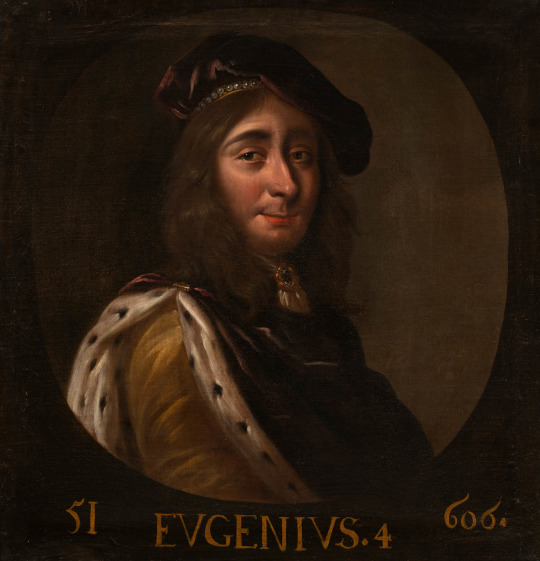
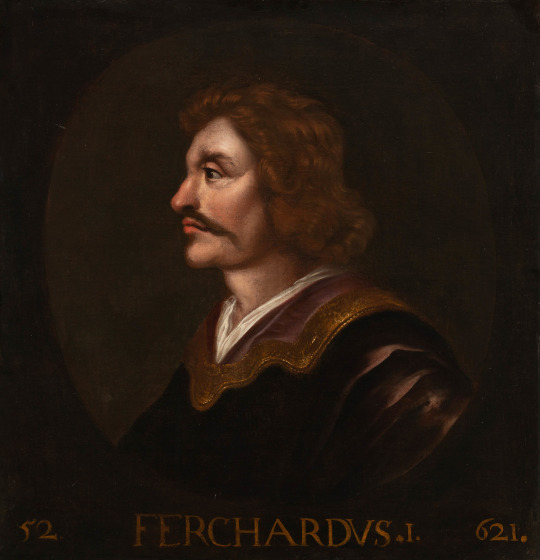
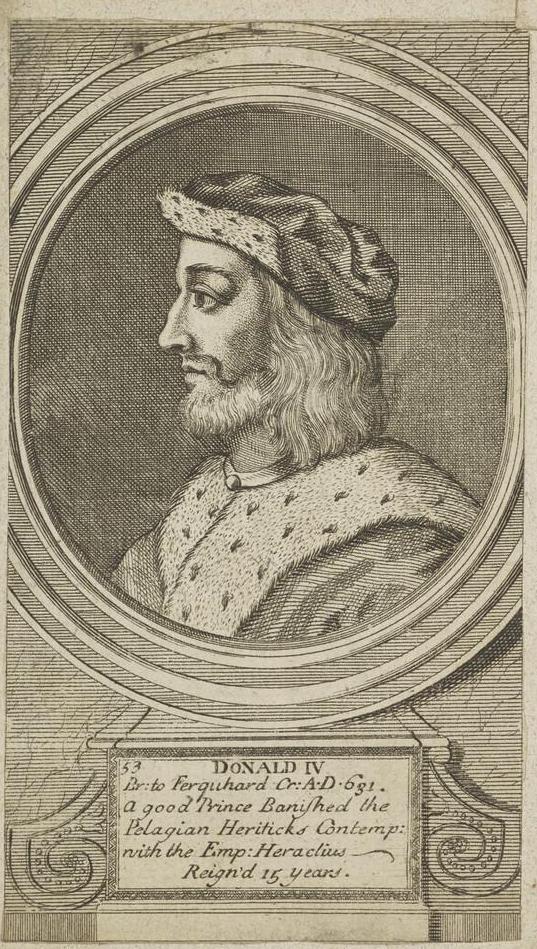
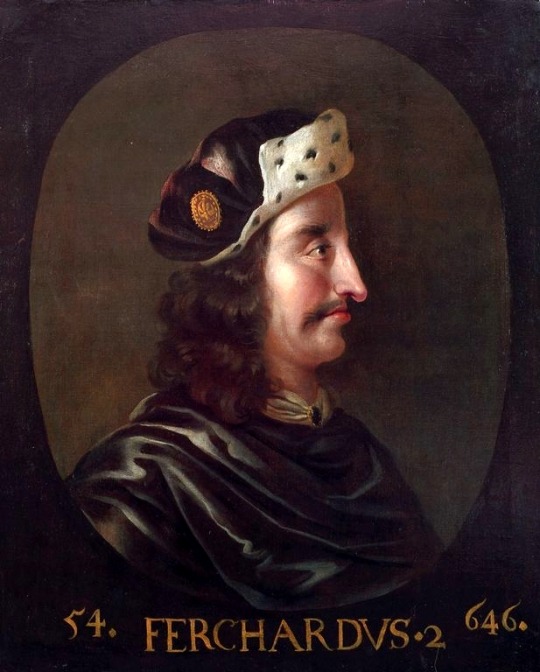
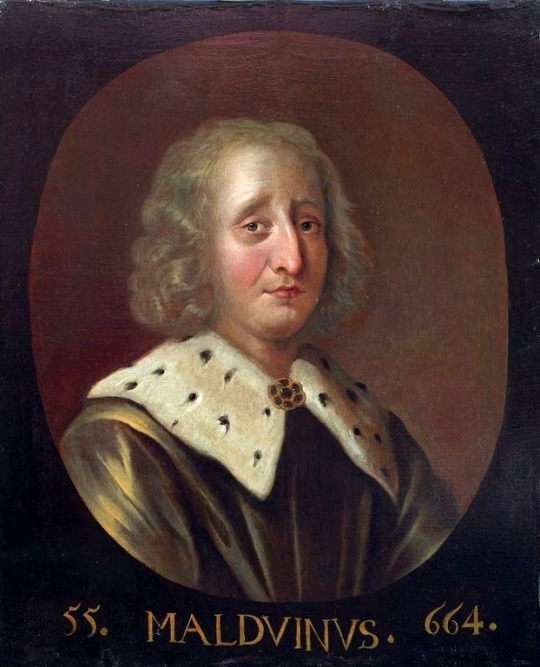
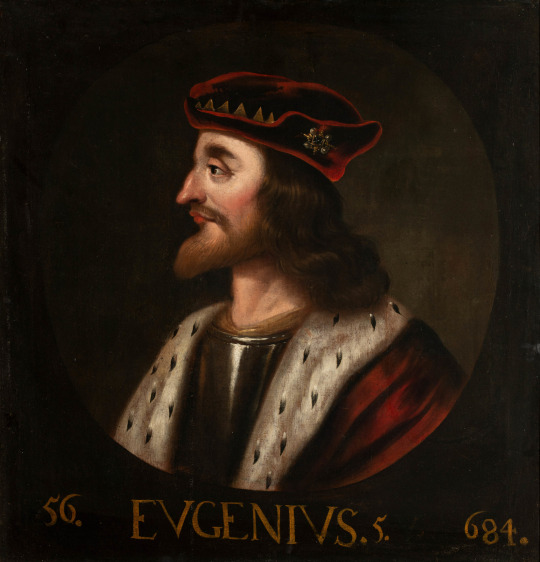



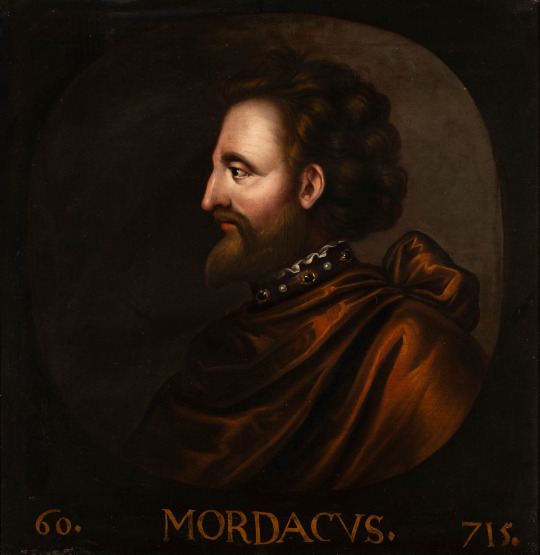
Legendary Kings of Scotland.
51. Eugenius IV (Eochaid Buide, King of Dál Riata from around 608 until 629).
52. Fearchair I (Ferchar mac Connaid, King of Dál Riata from about 642 until 650).
53. Donaldus IV (Domnall Brecc or Donald the Freckled, King of Dál Riata, from about 629 until 642).
54. Ferchardus II (Ferchar Fota or Ferchar the Tall, probably King of the Cenél Loairn of Dál Riata, and perhaps of all Dál Riata)
55. Maldvinus.
56. Eugenius V.
57. Eugenius VI.
58. Amberkelethus (Ainbcellach mac Ferchair, King of the Cenél Loairn of Dál Riata, and perhaps of all Dál Riata, from 697 until 698, when he was deposed and exiled to Ireland).
59. Eugenius VII (Likely duplicates Eugenius VI; King of Dál Riata from 726 until 733).
60. Mordacus (Muiredach mac Ainbcellaig), King of the Cenél Loairn, and of Dál Riata, from about 733 until 736.
#kingdom of scotland#list of scottish kings#list of monarchs of scotland#rerum scoticarum historia#kingdom of dalriada#kings of scotland#kings of dalriada#scottish dna#eugenius iv#eugenius v#eugenius vi#eugenius vii#ferchardus ii#maldvinus#amberkelethus#mordacus#donaldus iv#king donald#jacob jacobsz de wet ii#richard cooper#george buchanan#list of monarchs
10 notes
·
View notes
Text
Events 8.22
392 – Arbogast has Eugenius elected Western Roman Emperor.
851 – Battle of Jengland: Erispoe defeats Charles the Bald near the Breton town of Jengland.
1138 – Battle of the Standard between Scotland and England.
1485 – The Battle of Bosworth Field, the death of Richard III and the end of the House of Plantagenet.
1559 – Bartolomé Carranza, Spanish archbishop, is arrested for heresy.
1614 – Fettmilch Uprising: Jews are expelled from Frankfurt, Holy Roman Empire, following the plundering of the Judengasse.
1639 – Madras (now Chennai), India, is founded by the British East India Company on a sliver of land bought from local Nayak rulers.
1642 – Charles I raises his standard in Nottingham, which marks the beginning of the English Civil War.
1654 – Jacob Barsimson arrives in New Amsterdam. He is the first known Jewish immigrant to America.
1711 – Britain's Quebec Expedition loses eight ships and almost nine hundred soldiers, sailors and women to rocks at Pointe-aux-Anglais.
1717 – Spanish troops land on Sardinia.
1770 – James Cook names and lands on Possession Island, and claims the east coast of Australia for Britain as New South Wales.
1777 – British forces abandon the Siege of Fort Stanwix after hearing rumors of Continental Army reinforcements.
1780 – James Cook's ship HMS Resolution returns to England (Cook having been killed on Hawaii during the voyage).
1791 – Beginning of the Haitian Slave Revolution in Saint-Domingue, Haiti.
1798 – French troops land at Kilcummin, County Mayo, Ireland to aid the rebellion.
1827 – José de la Mar becomes President of Peru.
1846 – The Second Federal Republic of Mexico is established.
1849 – The first air raid in history. Austria launches pilotless balloons against the city of Venice.
1851 – The first America's Cup is won by the yacht America.
1864 – Twelve nations sign the First Geneva Convention, establishing the rules of protection of the victims of armed conflicts.
1875 – The Treaty of Saint Petersburg between Japan and Russia is ratified, providing for the exchange of Sakhalin for the Kuril Islands.
1894 – Mahatma Gandhi forms the Natal Indian Congress (NIC) in order to fight discrimination against Indian traders in Natal.
1902 – Cadillac Motor Company is founded.
1902 – Theodore Roosevelt becomes the first President of the United States to make a public appearance in an automobile.
1902 – At least 6,000 people are killed by the magnitude 7.7 Kashgar earthquake in the Tien Shan mountains.
1922 – Michael Collins, Commander-in-chief of the Irish Free State Army, is shot dead in an ambush during the Irish Civil War.
1934 – Bill Woodfull of Australia becomes the only test cricket captain to twice regain The Ashes.
1941 – World War II: German troops begin the Siege of Leningrad.
1942 – Brazil declares war on Germany, Japan and Italy.
1944 – World War II: Holocaust of Kedros in Crete by German forces.
1949 – The Queen Charlotte earthquake is Canada's strongest since the 1700 Cascadia earthquake.
1953 – The penal colony on Devil's Island is permanently closed.
1962 – The OAS attempts to assassinate French president Charles de Gaulle.
1963 – X-15 Flight 91 reaches the highest altitude of the X-15 program (107.96 km (67.08 mi) (354,200 feet)).
1966 – Labor movements NFWA and AWOC merge to become the United Farm Workers Organizing Committee (UFWOC), predecessor of the United Farm Workers.
1968 – Pope Paul VI arrives in Bogotá, Colombia. It is the first visit of a pope to Latin America.
1971 – J. Edgar Hoover and John Mitchell announce the arrest of 20 of the Camden 28.
1972 – Rhodesia is expelled by the IOC for its racist policies.
1973 – The Congress of Chile votes in favour of a resolution condemning President Salvador Allende's government and demands that he resign or else be unseated through force and new elections.
1978 – Nicaraguan Revolution: The FLSN seizes the National Congress of Nicaragua, along with over a thousand hostages.
1978 – The District of Columbia Voting Rights Amendment is passed by the U.S. Congress, although it is never ratified by a sufficient number of states.
1981 – Far Eastern Air Transport Flight 103 disintegrates in mid-air and crashes in Sanyi Township, Miaoli County, Taiwan. All 110 people on board are killed.
1985 – British Airtours Flight 28M suffers an engine fire during takeoff at Manchester Airport. The pilots abort but due to inefficient evacuation procedures 55 people are killed, mostly from smoke inhalation.
1989 – Nolan Ryan strikes out Rickey Henderson to become the first Major League Baseball pitcher to record 5,000 strikeouts.
1991 – Iceland is the first nation in the world to recognize the independence of the Baltic states.
1992 – FBI sniper Lon Horiuchi shoots and kills Vicki Weaver during an 11-day siege at her home at Ruby Ridge, Idaho.
1999 – China Airlines Flight 642 crashes at Hong Kong International Airport, killing three people and injuring 208 more.
2003 – Alabama Chief Justice Roy Moore is suspended after refusing to comply with a federal court order to remove a rock inscribed with the Ten Commandments from the lobby of the Alabama Supreme Court building.
2004 – Versions of The Scream and Madonna, two paintings by Edvard Munch, are stolen at gunpoint from a museum in Oslo, Norway.
2006 – Pulkovo Aviation Enterprise Flight 612 crashes near the Russian border over eastern Ukraine, killing all 170 people on board.
2006 – Grigori Perelman is awarded the Fields Medal for his proof of the Poincaré conjecture in mathematics but refuses to accept the medal.
2007 – The Texas Rangers defeat the Baltimore Orioles 30–3, the most runs scored by a team in modern Major League Baseball history.
2012 – Ethnic clashes over grazing rights for cattle in Kenya's Tana River District result in more than 52 deaths.
0 notes
Text
Compilation of Sources About Vlad
Vlad Tepes und die Sachsischen Selbstverwaltungsgebiete Siebenburgens
By Gustav Gundish in Revue roumaine d'histoire (1969)
Available for download in pdf format: http://dspace.bcucluj.ro/handle/123456789/139788
_
Ioan Bogdan: Documente și regeste privitoare la relațiile Țăriĭ Rumînești cu Brașovul și Ungaria în secolul XV și XVI
Publication date 1902
Source Biblioteca Digitală a României
This work contains important letters and documents by Vlad III Drakulya and his contemporaries in Romanian language.
http://www.digibuc.ro/
_
Documenta Romaniae Historica. Series D. Relations between the Romanian Countries. Volume 1: 1222-1456
http://www.digibuc.ro/proxy/?px=aHR0cDovL2RpZ2l0b29sLmJpYm1ldC5ybzo4ODgxL1IvOFRESERDTUdZVENETjg2NExIVVVUQThORDNZSlZUVEU4S0k3SkZNRlRGSzhEOUg3TjUtMDAwNzA/ZnVuYz1yZXN1bHRzLWp1bXAtZnVsbCZhbXA7c2V0X2VudHJ5PTAwMDAwMSZhbXA7c2V0X251bWJlcj0wMTczODYmYW1wO2Jhc2U9R0VOMDE=
A remarkable collection of letters, official documents etc in Latin and Romanian by Vlad III Drakulya, Janos Hunyadi and many others. 573 pages. Available for download in pdf format.
_
Another important collection of documents by Vlad III Drakulya, his father Vlad Dracul, his brother Radu cel Frumos and other historical figures. 687 pages. In Romanian. Available for download in pdf format.
Documenta Romaniae Historica. Seria B : Ţara Românească. Volumul 1 : 1247-1500
http://www.digibuc.ro/proxy/?px=aHR0cDovL2RpZ2l0b29sLmJpYm1ldC5ybzo4ODgxL1IvOUg2OE1HTUQxSEU2VEE1Q0tMUFBDWUIzNU5QMkRHUEc5OTJDSFNKRjRDVUpUUUxSQlgtMDA4MDg/ZnVuYz1yZXN1bHRzLWp1bXAtZnVsbCZhbXA7c2V0X2VudHJ5PTAwMDE1NCZhbXA7c2V0X251bWJlcj0wMjAzODUmYW1wO2Jhc2U9R0VOMDE=
_
LA VICTOIRE DE VLAD L’EMPALEUR SUR LES TURCS (1462)
par NICOLAE STOICESCU, 1976, in Revue roumaine d’histoire
http://dspace.bcucluj.ro/handle/123456789/139824
Available for download in pdf format
_
Critical edition of Laonikos Chalkokondyle's
"Histories" by Egenius Darkó.
Laonici Chalcocandylae Historiarum demonstrationes. Ad fidem codicum recensuit, emendavit annotationibusque criticis instruxit Eugenius Darkó
by Chalkokondyls, Laonikos, ca. 1430-ca. 1490
Publication date: 1922
Publisher: Budapestini Sumptibus Academiae litterarum hungaricae
Languages: Latin, Greek
Available for download in pdf format
https://archive.org/.../laonicichalcocan.../page/vi/mode/2up
"The Histories", by Laonikos Chalkokondyles describes the fall of the Byzantine empire and the rise of the Ottomans. Written sometime between 1464 and 1468, it centres around the capture of Constantinople in 1453. However, it also covers many events that were happening in Eastern Europe, where the Ottomans, Hungarians and other states were vying with each other. It gives us an account of Vlad III Drakulya too.
_
PÂNDELE OLTEANU
LIMBA POVESTIRILOR SLAVE DESPRE VLAD ȚEPEȘ
Ed. Acad. R. P. R., Bucarest, 1961, 409 p.
(TALES IN SLAVIC LANGUAGE ABOUT VLAD ȚEPEȘ)
In Revue roumaine d’histoire, 1965, Bucureşti : Editura Academiei Române.
Language: French
Pages 140-145
An old but very interesting paper, available for donwload in pdf format.
http://dspace.bcucluj.ro/handle/123456789/139764
_
Vlad Ţepeş şi Naraţiunile Germane şi Ruseşti asupra lui : Studiu critic (1896)
[Vlad Ţepeş and the German and Russian Narratives about Him: A Critical Study]
Author: Bogdan, Ioan (1864-1919).
Bucureştĭ : Editura Librăriei Socecǔ & Comp.
Language: Romanian
Available for download in pdf format
http://www.digibuc.ro/proxy/?px=aHR0cDovL2RpZ2l0b29sLmJpYm1ldC5ybzo4ODgxL1IvR1JWS1ZRVUFEOFhUQkM1MjhQMkUxTUlGUVY0UENYWEwxNUNFUElESk5RWEVFTk5TNjQtMDIwNTQ/ZnVuYz1yZXN1bHRzLWp1bXAtZnVsbCZhbXA7c2V0X2VudHJ5PTAwMDAwMyZhbXA7c2V0X251bWJlcj0wMDE5NzgmYW1wO2Jhc2U9R0VOMDE=
_
The slanderous German incunabula about Vlad III Drakulya.
1) The two incunabula ("Dracole Wayda", Nuremberg 1488, Augsburg 1494) which are obviously both based on a common original text, depict a misleading and barbaric image of the Wallachian Prince. They are two out of at least eleven further prints of this kind, which appeared on the book markets of rich German merchant towns as of 1488.
All pamphlets start with a very brief biography of Vlad III, followed by an unsystematic listing of almost 50 gruesome anecdotes from his reign.
The spreading of these historically largely made up stories is doubtlessly connected with the growing reading public's craving for sensation.
Available for download in pdf format.
https://opacplus.bsb-muenchen.de/title/BV023354729
and
https://opacplus.bsb-muenchen.de/title/BV023354738
2) The Saint-Gall manuscript. A composite manuscript consisting mainly of historiographic and hagiographic content. The texts were written between 1450 and 1550, then assembled as a volume in 1573 by St. St. Gall monk Mauritius Enk.
This text is only transmitted in three other manuscripts: one at the library of Lambach Abbey in upper Austria, one at the British Library in London, and one at the Municipal Library of Colmar in France.
https://www.e-codices.unifr.ch/en/csg/0806/283
See also Matei Cazacu, “ GESCHICHTE DRACOLE WAIDE UN INCUNABLE IMPRIMÉ A VIENNE EN 1463” , available for dowload in pdf format.
https://www.academia.edu/.../Geschichte_Dracole_waide._Un...
_
the chronicle of Antonius Bonfinius, “Historia Pannonica: Sive Hungaricarum Decades ” . Antonio Bonfini (Latin variant: Antonius Bonfinius; 1427‒1502) was an Italian humanist and poet who spent the last years of his career as a court historian in Hungary. He was a secretary to King Matthias Hunyadi Corvinus and was commissioned by him to produce a work chronicling the History of Hungary. Bonfini arrived at Matthias’s court in 1486; the king assigned him this project in 1488. Under Matthias’s successor Vladislaus II, Bonfini could continue his work intermittently until 1497.
Bonfini gives in his work a lengthy description of the alleged “crimes” of the Wallachian Prince Vlad III, closely resembling the German stories. Some of the paragraphs coincide with the German pamphlets, while others are different. Bonfini apparently used a printed or manuscript version of the malicious German narratives about Drakulya which were circulating at that time.
1) Two original pages of Bonfini “Rerum Hungaricarum Decades”, available at https://corvina.hu/kepnezegeto/index.php...
2) Critical edition of Bonfini's work by I. Fogel, B. Ivanyi and L. Juhasz, Lipsiae, Bibliotheca Scriptorum Medii Recentisque Aevorum SAEC. Available at: https://szovegtar.iti.mta.hu/.../antonius-de-bonfinis/
3) Antonii Bonfini Asculani Rerum Hungaricarum decades libris 45. comprehensae ab origine gentis ad annum 1495. Accessit index rerum locupletissimus recensuit et praefatus est d. Carolus Andreas Bel .. (1771). Available at https://archive.org/.../bub_gb.../page/n6/mode/2up...
-
His monetary policy is a scarcely investigated side of the rule of Wallachian Voivode Vlad III Drakulya.
The Octavian Iliescu's paper “Vlad l'Empaleur et le droit monétaire” gives us a very interesting insight into this topic. In “Revue roumaine d'histoire”, 1979, Bucureşti, Editura Academiei Române.
Available for download in pdf format at http://dspace.bcucluj.ro/handle/123456789/139834
See also Matei Cazacu, “L'impact Ottoman sur le Pays Roumains et ses incidences monétaires (1452-1504). In “Revue roumaine d'histoire”, 1973, Bucureşti : Editura Academiei Române.
Available for download in pdf format at http://dspace.bcucluj.ro/handle/123456789/139807
-
I'm currently investigating the historical figure of the Wallachian Voivode Vlad III Drakulya , his contemporaries and his times, so today I would like to draw attention to this interesting book about diplomatic relationships between Transylvania, Hungary, Moldova and Wallachia in the period 1468 to 1540.
It's called “Acta et epistolae relationum Transylvaniae Hungariaeque cum Moldavia et Valachia” Volumen primum, by Veress, Endre (Budapest,1914), Publisher Kolozsvár Fontes rerum transylvanicarum, in Hungarian and Latin.
It contains important documents and letters about the last years of life of Vlad III, his death and the political events of the period.
Those interested can download it in pdf format at https://archive.org/details/actaetepistolaer01vereuoft
-
In reference to my previous post, here are two more sources.
1) Magyar diplomacziai emlékek Mátyás király korából 1458-1490 , by Iván Nagy, Albert Nyáry, Matthias, 1877, Publisher A M. Tud. Akadémia. Avaliable for download at https://archive.org/.../magyardiplom.../page/n14/mode/2up...
2) Monumenta Hungariae historica: Magyar történelmi emlékek, byTörténelmi Bizottság , Magyar Tudományos Akadémia,1875,Publisher Magyar Tudományos Akadémia. Available for download at https://archive.org/.../monumentahun.../page/n13/mode/2up...
-
Today, I want to introduce the work of Ludovico Antonio Muratori (1672-1750) “Rerum Italicarum scriptores ab anno aerae christianae quingentesimo ad millesimumquingentesimum” (1731), Volume 18, Publisher Mediolani : ex typographia Societatis Palatinae in Regia Curia.
Ludovico (also spelled Lodovico) Antonio Muratori was an Italian historian, notable as a leading scholar of his age. Duke Rinaldo I d'Este (1700) appointed him archivist and librarian in Modena's Ducal library, which position he held until his death in that city. He studied sources for a history of Italy, and as a fruit of his researches there appeared the large work, “Rerum italicarum Scriptores ab anno æræ christianæ 500 ad annum 1500” (Writers on Italy, 500–1500). It was published in twenty-eight folio volumes with the assistance of the Società Palatina of Milan (Milan, 1723–51).
In Volume 18 of his massive work (18.2: Matthaei de Griffonibus “Memoriale historicum de rebus Bononiensium”: aa. 4448 a.C.-1472 d.C.), we can find a brief account of the Wallachian victories against the Ottoman forces of Mehemet II in the summer of 1462. The thrilling news of the attack on the Ottoman camp by the troups of Vlad III Drakulya were brought to Bologna by Venetian merchant's letters. According to these reports, 40000 Turks were slained or take prisoners.
Those interested can download Muratori's work at https://archive.org/.../RerumItalica.../page/n12/mode/2up...
See also the letter of Dominicus Balbi to Signoria di
Venetia, 28 July 1462, in Monumenta Hungariae historica: Magyar történelmi emlékek (mentioned in my post from yesterday).
https://archive.org/.../monumentahun.../page/n13/mode/2up...
-
The document mentioning for the first time the city of Bucureşti (Bucharest), issued on 20 September 1459 by Vlad III Drakulya Ţepeş.
In this document, Vlad Drakulya sanctioned the possessions of some local nobles in Mehedinti county. The city was founded in 1459 by Voivode Vlad Ţepeş, on the shore of the Dâmbovita river. Later, the city became the principality's capital city. The legends say that the name of the city come from Bucur, a shepherd, or noble, or outlaw.
Transcription's source:
http://www.digibuc.ro/proxy/?px=aHR0cDovL2RpZ2l0b29sLmJpYm1ldC5ybzo4ODgxL1IvQjRBWDlGR0I4RVRYOEpQSzlJNFNQMkZMU0E1NDFZWEY5QzFNU1EzNElOS1YxRjFSWTktMDg3NjQ/ZnVuYz1yZXN1bHRzLWp1bXAtZnVsbCZhbXA7c2V0X2VudHJ5PTAwMDAwMiZhbXA7c2V0X251bWJlcj0wMTU3NzgmYW1wO2Jhc2U9R0VOMDE=
Source of Drakulya's portrait : the infamous German pamphlet published in Nuremberg in 1488, Bayerische StaatsBibliothek
-
Solicitare de adăpost din partea domnului Țării Românești.
Data: 1456.09.06
Emitent: Vlad Țepeș, domnul Țării Românești
Application for asylum by the Wallachian sire
Date: 1456.09.06
Sender: Vlad Țepeș, sire of Wallachia
Vlad III Drakulya Țepeș attest an agreement concluded with the representatives of the Burzenland people, through which he is guaranteed refuge in Burzenland (Țara Bârsei ,an area in southeastern Transylvania with a mixed population of Romanians, Germans, and Hungarian) if he opposes the Turks.
Sources:
http://arhivamedievala.ro/.../sb1ac891.../PortalHome.jspx...
and
Gustav Gündisch, Urkundenbuch zur Geschichte der Deutschen in Siebenbürgen, vol. 5, București, 1975, doc. 3038.
http://www.digibuc.ro/proxy/?px=aHR0cDovL2RpZ2l0b29sLmJpYm1ldC5ybzo4ODgxL1IvVjk0NEZVQ1NFOFhSM0dCR0RMUVNNVDdBQjRHTUozNlAzNjNEVTRBNVVQUzZVTEZJUzYtMDA3MzU/ZnVuYz1yZXN1bHRzLWp1bXAtZnVsbCZhbXA7c2V0X2VudHJ5PTAwMDAwMSZhbXA7c2V0X251bWJlcj0wMDM0NDAmYW1wO2Jhc2U9R0VOMDE=
-
The letter allegedly sent by Vlad III Drakulya Ţepeş, Voivode of Wallachia, to Sultan Mehmet II on 7 November 1462 and his supposed treason against Matthias Hunyadi Corvinus, in “Pii secvndi pontificis max. Commentarii rerum memorabilium, quae temporibus suis contigerunt” by Pius II, Pope, 1405-1464; Gobellinus, Joannes; Ammannati Piccolomini, Jacopo, 1422-1479; Pius II, Pope, 1405-1464. Apologia ad Martinum Mayer.
Publication date: 1584
Publisher: Romae, Ex typographia Dominici Basae
Language: Latin
Available at: https://archive.org/details/piisecvndipontif00pius
[Pope Pius II, born Enea Silvio Bartolomeo Piccolomini (18 October 1405 – 14 August 1464). He was born at Corsignano in the Sienese territory, Tuscany, Italy. His major work is the “Commentaries”.]
For an excellent analysis of the complex political background of this entry in Pius II work, I refere those interested to Alexandru Simon's paper “A Humanist's Pontifical Playground: Pius II and Transylvania in the Days of John Dragula”, in Transylvanian Review . 2020 Supplement, Vol. 29, p35-70. 36p.
Available online at https://web.a.ebscohost.com/abstract?direct=true&profile=ehost&scope=site&authtype=crawler&jrnl=12211249&AN=149408111&h=yxGso1dhUtosN0nJiSVsTxjOATB20ADd7awuq45SSQbuV1z7dZTj%2fxaoVXAkNGghLlrC5EYLvekc4%2f4svJpxNQ%3d%3d&crl=f&resultNs=AdminWebAuth&resultLocal=ErrCrlNotAuth&crlhashurl=login.aspx%3fdirect%3dtrue%26profile%3dehost%26scope%3dsite%26authtype%3dcrawler%26jrnl%3d12211249%26AN%3d149408111
#Vlad voda#Vlad Tepes#Vlad Dracula#vlad the impaler#Ladislau Dragkwlya#history#wallachia#romania#vlad dracula tepes#article#Compilation of Sources
11 notes
·
View notes
Photo
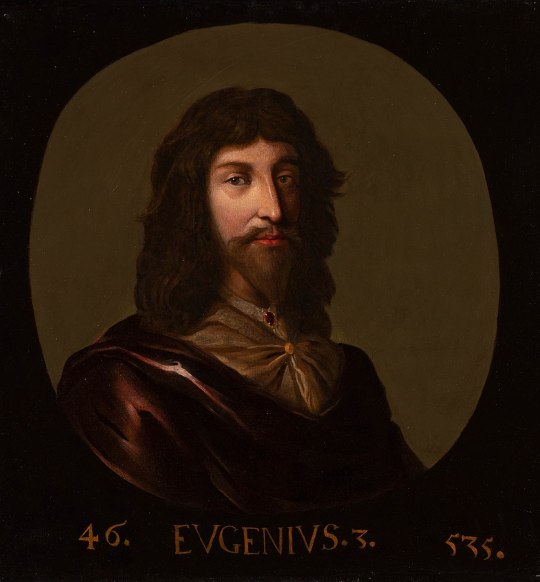
Jacob Jacobsz de Wet II - Eugenius III, King of Scotland (535-58) - 1684-6
The Scottish Renaissance humanist George Buchanan gave a long list of Scottish Kings in his history of Scotland—published in Latin as Rerum Scoticarum Historia in 1582—most of whom are now considered by historians to be figures of legend, or completely misrepresented. The list went back around 1900 years from his time, and began with Fergus I. James VI of Scotland, who was Buchanan's pupil, adopted the story of Fergus I as his ancestor, and the antiquity of the line was emphasised by the House of Stuart.
Jacob Jacobsz de Wet II (1641, Haarlem – 1697, Amsterdam), also known as James de Witt, was a Dutch Golden Age painter known for a series of 110 portraits of Scottish monarchs, many of them mythical, produced for the Palace of Holyroodhouse, Edinburgh during the reign of Charles II.
6 notes
·
View notes
Photo
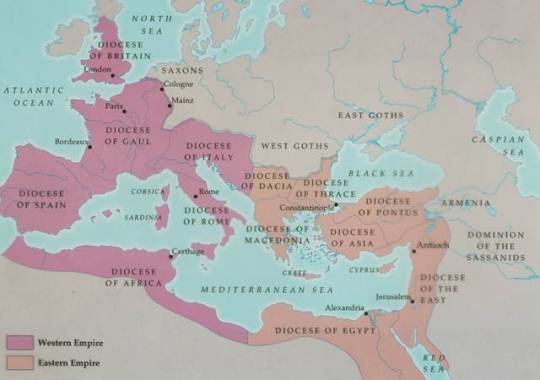
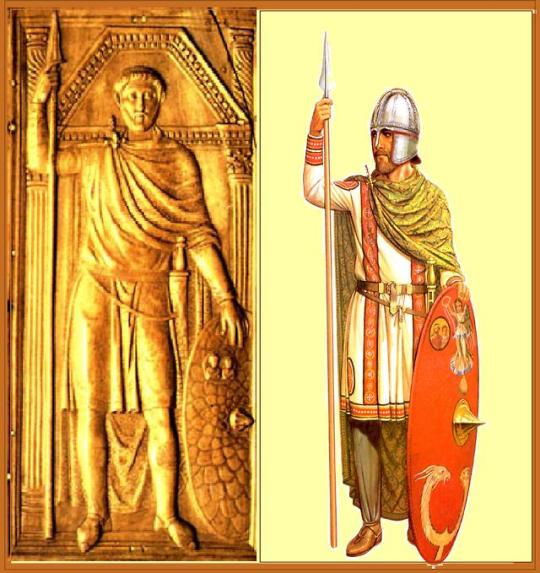
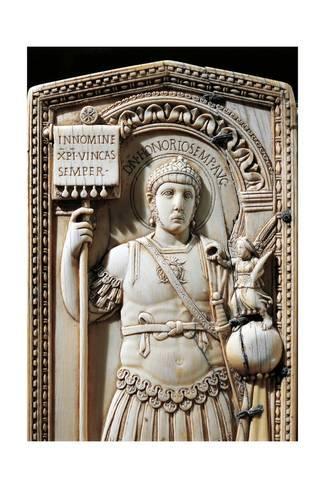
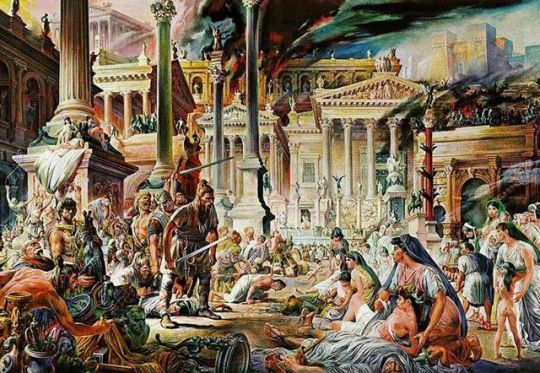
The Evolution of the Roman Empire Part VII --- Stilicho, Honorius, and the Destruction of the Roman Army
In case you missed: Part I, II, III, IV, V, VI
In the last post I made the assertion that throughout and up to the late 4th century the Roman Army was very strong, and that despite the fact that the Western Roman Empire was on a sharp decline, the state scrapped up enough cash and resources to make sure that the army stayed that way. In the period between around 388 and 410 a series of events would occur that would bring about the downfall of the Western Roman Army as well as the Western Empire. Before I begin I want to give warning; the events I am writing about are extremely complex and very detailed. For brevity’s sake I am going to be leaving out a lot of details. Whole books have been written about this time period in Roman history. I myself could do an eight parts series on this time period alone. However I will do the best that I can to keep things short, simple, and cover most of the major points.
At around 383 AD Rome was divided into two subdivisions. In the eastern half ruled Theodosius I, who was officially emperor of the entire empire, but de facto ruler of only the eastern empire. In the west the empire was co-ruled by two emperors, Gratian and Valentinian II. In that year a Roman general named Magnus Maximus rebelled against Rome, murdered Gratian, and declared himself emperor. In 388 Maximus marched on Italy and attempted to remove Valentianian II, making himself sole emperor of the west. However, Theodosius intervened and defeated Maximus’ army at the Battle of the Save. In 392 a Frankish/Roman general named Arbogast murdered Valentinian II and installed a Roman minister named Eugenius as emperor. Once against Theodosius intervened, and with an army of 20,000 Goths and 20,000 Eastern Roman soldiers defeated a similar sized Western Roman Army at the Battle of the Frigidius. While there are no records of the casualties resulting from these civil wars, one thing that is clear is that the casualties were described as being extremely heavy. Rome had suffered disastrous casualties before, such as the Battle of Cannae and the Battle of Arausio where in each near 80,000 Roman soldiers were massacred in a matter of hours. However, at this point in history the Roman Empire was suffering a sharp decline, a far cry from the empire of the Roman golden ages. Generations of incompetent leadership, rampant government corruption, and near constant civil war had taken it’s toll, leaving the empire with a depressed economy and a severe lack of resources. Suddenly, in the span of 4 years, the mighty Western Roman Army was reduced by a large fraction, and the empire had not the means to replace these losses.
Theodosius I died in 395, being the last emperor to rule over a united Roman Empire. After his death, his two sons inherited the empire, Honorius in the West, and Arcadius in the East.

When Honorius ascended to the throne he was but a young child, thus de facto rule of the empire fell upon his guardian, a Roman general of Vandal birth named Flavius Stilicho. Known now as one of the greatest generals in Roman history, Stilicho would come to power at a time when all hell was about to be unleashed upon the empire.
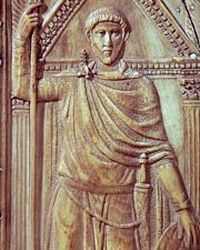
Between the years 395 to 397 he put down a Visigoth revolt lead by King Alaric. Then in later 397 the Roman governor of North Africa, a general named Gildo, revolted against the empire and cut off the grain supply to Rome. This revolt was quashed just in time for the Picts to start up trouble along the northern border of Britain along Hadrian’s Wall. In 402 Alaric once again tried his hand at conquest by invading Italy and even laying siege to the Roman capital in Ravenna, once again Stilicho defeated him in battle. Alaric agreed to foederati status and promised military aid in the future. In 406 a massive barbarian invasion consisting of Alans, Sueves, and Vandals led by a Gothic king named Radagaisus invaded Italy, but once again were defeated by Stilicho.
In order to build an army capable of dealing with so many crises, Stilicho was forced to recall legions from around the empire, especially near the border regions. In addition Stilicho filled the ranks of his army with barbarian recruits as well as foederati units. For example, in his campaign against Radagaisus, Stilicho’s army consisted of an odd mixture of Roman regulars as well as foederati Goths, Vandals, Huns, and Alans. As a result of Stilicho siphoning units away from the provinces,many parts of the empire were left undefended and the border along the Rhine and Danube was undermanned, allowing more barbarians to storm into Gaul (France). In response, the Governor of Britain, fed up with the empire’s inability to deal with the barbarians, would proclaim himself emperor, and moved all of his forces to Gaul. Stilicho would try to put down this revolt, but was unsuccessful. As a compromise, the British governor was made co-emperor, taking the name Constantine III. This was good enough for Stilicho, the last thing Rome needed was a civil war, and Constantine III could handle the barbarians in Gaul.
After twelve years of shit hitting the fan, the empire still stood,all thanks to Stilicho. Despite seeing the empire through one crises after another, you would think that the Roman state would be kissing his feet. In reality, Stilicho had made a number of enemies, many of whom were ministers to the young emperor Honorius. They filled Honorius with rumors; that Stilicho planned to overthrow and replace Honorius, that the Vandal descended general had plans to sell out the empire to the barbarians, that Stilicho was a modern day Julius Caesar. As a result, Honorius ordered the death of Stilicho, and ordered a purging of pro-Stilicho elements in the government and army. On August 22nd, 408 Stilicho was captured and beheaded.
With the death of Stilicho it was now up to Honorius and his regime to perform the juggling act that was managing the empire. Honorius was 24 years old. I know when I was 24 years old I was certainly not cut out to rule an empire in crises. Rome has had its share of incompetent, evil, and downright batshit crazy emperors, however by the reign of Honorius, Roman emperors were spoiled brats who spent most of their time cloistered in their palaces, drinking wine and playing backgammon, with no knowledge of how the real world worked. Honorius is particularly noted for being a dimwit. Fortunately for Honorius there was only one requirement he needed to fulfill and all would be well; DON’T PISS OFF THE BARBARIANS!!! By 408 a large percentage of the Roman Army was made up of barbarian recruits and was further reliant on foederati units. As I mentioned in the previous post, barbarians of the 5th century were not the raging hordes of popular imagination, but were well armed, well trained, and well organized professional armies manned by many veterans of the Roman Army. Also, unlike popular imagination, most barbarians were not out to conquer or destroy the empire, at least initially. Rather, most barbarians hoped to become a part of the empire, serving as full fledged Roman citizens.
Stilicho was able to recruit the support of so many foederati by playing into these desires, promising that loyal tribes who completed an honorable term of service to the empire would be settled on a plot of land, given a stipend of grain until they became self sufficient, and eventually would be granted Roman citizenship. When Honorius came to power, he declared that all of Stilicho's previous deals were off. As a result, most foederati deserted the Roman Army. Finally, one of Honorius' ministers, a man named Olympius who was famous for orchestrating the death of Stilicho, declared that barbarians were no longer fit to live in Italy. Across Italy Imperial soldiers went from town to town, city to city, and rounded up thousands of barbarian men, women, elderly, and children, putting them to the sword. In response, Alaric and his Goths again revolted against the empire. Around 30,000 barbarian soldiers in the regular Roman Army would desert and join his cause along with thousands of barbarian refugees.
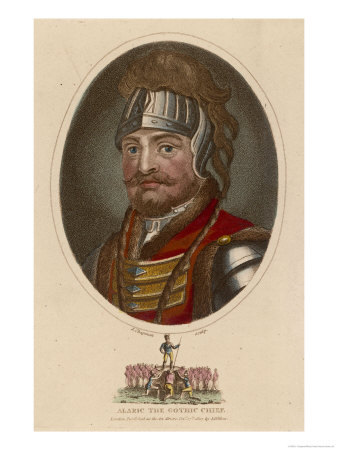
The timing for this was bad for Honorius, as Constantine III had sent his army to invade Italy in an attempt to make himself sole emperor. Most loyal troops were away dealing with Constantine when Alaric and his army invaded Italy.
In 408 Alaric laid siege to Rome, sending a message to the Roman Senate that it was time to renegotiate their deal. The Senate agreed, paying a sum of gold, silver, and clothing to the Goths as a sign of good faith as well as freeing 40,000 Goth slaves. However, Honorius intervened and declared that they would make no deals with the barbarians. Alaric laid siege to Rome again, and once again the Senate declared they were willing to make a deal. Again Honorius intervened saying "no deal!" Alaric laid siege to Rome a third time, this time sweetening the pot by offering to be settled along the Danube, where Gothic men would be enrolled in the Roman Army and would take responsibility for guarding the border. The Senate were practically jumping from their seats shouting, "yes! YES! WE WILL TAKE THAT DEAL!!!". For some reason Honorius didn't quite understand that when negotiating it helps to have some leverage on your side, especially when your demands are unconditional. If leverage could be measure on a scale from 1-10, Alaric would have a 10, Honorius would have a zero. Honorius once again declared that there would be no deal, sending small detachments of Roman soldiers, which Alaric’s army would easily ambush and destroy. In 410 AD Alaric and his Goths sacked Rome. The Goths looted the city and when satiated with enough plunder, moved north and settled in Gaul (France). Honorius was damned lucky they didn't make a stop at Ravenna while on their way and claim his head as well. At the time, the only defenses available to Honorius were his palace guards.
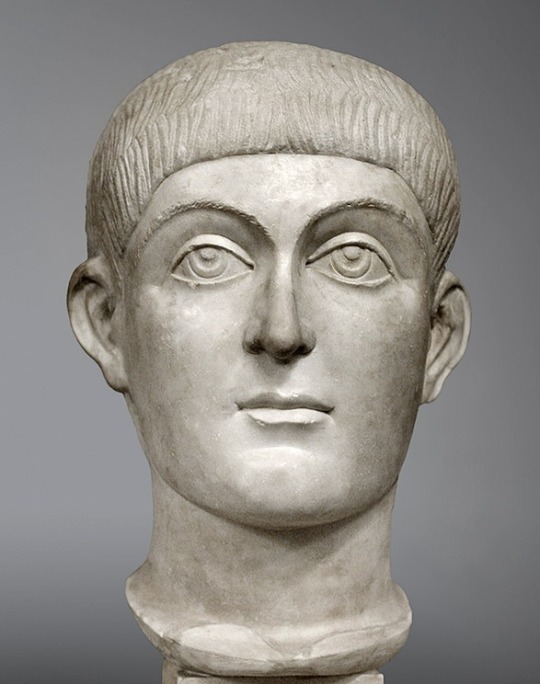
So what happened to the Roman Army between the years 388 and 410?Needless to say, the army was devastated by theses series of crises. Several clues can be inferred by a document called the "Notitia Dignitatum", which was a registry of government offices throughout the empire. In addition, the book lists all military units, where they are stationed, and who commanded them. Published periodically, the last known surviving example from the Western Empire dates to 420 AD. After the sack of Rome, Constantius III (not to be confused with Constantine III) a general and co-emperor of Honorius would attempt to rebuild the Roman Army. In an analysis of the Notitia Dignatatum published in 390 and the one published in 420, the historian A. H. M Jones details the damage that had been done to the army and the measures Constantius III had attempted to rebuild it. According to Jones in his three volume book "The Later Roman Empire” ( available to read for free at archive.org), of the 181 comitatense legions that existed in 390, only 89 were still in existence by 420. This means that around 50% of Rome's field army was destroyed (at the time a legion consisted of 1,000 men). Constantius III had managed to rebuild the army back to its 181 legions, however, the Roman Army was most likely only strong on paper. Of the 92 destroyed legions, only 21 replacement legions were created from new recruits. The rest were created by limitanei units that were promoted to comitatus status (Later Roman Empire, Vol 1, P. 196). Recall that limitanei units were not regular field army units. Their purpose was to guard the border, deal with small scale raids, and sound the alarm if a large invasion was on its way. They were light infantry reconnaissance units, guerrilla fighters, and part time militia, not front line combat heavy infantry. This poses the problem in that with less limitanei, there were now less men guarding the borders. In addition, most likely these men were not retrained and re-equipped to be comitatus units. Finally the Notitia Dignatatum does not give unit sizes, and it would not be unreasonable to assume that many of the units listed were undermanned and underequipped. BTW, the Notitia did have illustrations of the shield markings of different legions, which is pretty cool.
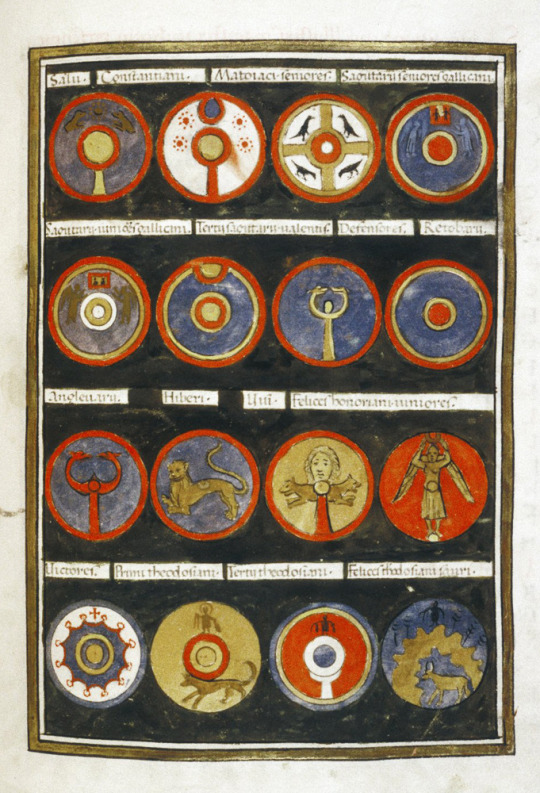
Based on this information, most likely it can be assumed that the Roman Army was a shell of it's formal glory. In the eighth and final installment of this series, what remains of the Roman Army will be whittled away to nothing, and finally Rome will cease to be.
At least it will in the West. If anyone would like to pick up where I left off and do a series on the Byzantine Army, please please please let me know.
#history#ancient history#ancient rome#roman army#western roman empire#military history#honorius#stilicho#goths#alaric
797 notes
·
View notes
Text
(VIDEO) His Majesty King Felipe VI of Spain Receives Letters of Credence from Newly Appointed Ambassadors.
(VIDEO) His Majesty King Felipe VI of Spain Receives Letters of Credence from Newly Appointed Ambassadors.
On the morning of Thursday, May 19, 2022, His Majesty King Felipe VI of Spain received Letters of Credence from newly appointed Ambassadors and a message from the President of Palastine at Palacio Real in Madrid.
The new Ambassadors to Spain are The Ambassador from the Republic of Mali, His Excellency Mr. Abdrahamane Baby, the Ambassador from the Republic of Moldova, His Excellency Mr. Eugeniu…
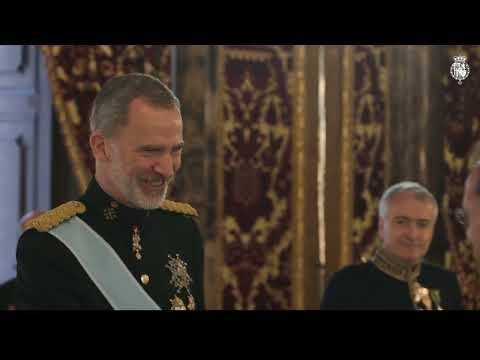
View On WordPress
0 notes
Text
DE HARTEKAMP, of Hartecamp
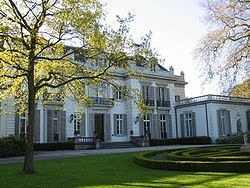
Aanvankelijk was de Hartekamp in de 16e eeuw een boerenhofstede met de Haarlemse familie Van Berkenrode als eigenaar en voor 1662 heette het Thorenvliet.
De Amsterdamse koopman Hendrik Zeegersz. van de Camp, eigenaar van 1662-1666, geldt als naamgever door zijn familienaam te verbinden met de aanwezige herten. Hij kocht de grond van Adriaen Pauw. Zijn stiefzoon Gillis erfde de boerderij en het land, maar kon niet aflossen en verkocht de Hartekamp aan zijn zwager, de dichter Jacobus Heiblocq die van 1680 tot 1687 eigenaar was.
Het eigenlijke huis is kort na 1692 gebouwd door de zoon van Jacob F. Hinlopen, Johan Hinlopen (1648 – 1709), die fortuin maakte als postmeester van het Antwerps Postcomptoir [verantwoordelijk voor exploitatie van de postroute Amsterdam-Antwerpen].
Die post- en passagiers-route zou vanaf de opening van de Leidse trekvaart in 1657 steeds meer per trekschuit gaan dan per diligence, waardoor de 'achtertuin' aan de Leidse vaart meer als 'voortuin' diende. Ook de latere bekend geworden ‘Hortus', tussen de Herenweg en Leidsevaart is toen ontworpen, blijkens een kaart van de hofstede uit 1708 van landmeter M. Walraven. Hinlopen liet een geometrische tuin en oranjerie aanleggen.
George Clifford ( Amsterdam, 31 augustus 1657 – aldaar, 20 september 1727 was een Nederlands bankier. Tussen 1696 en 1700 was hij directeur van de Sociëteit van Suriname.
Clifford begon zijn carrière op de Leliegracht. Hij was een zoon van George Clifford I (1623-1680). Deze was een zoon van Henry Clifford en kwam tussen 1634 en 1640 vanuit Engeland naar Amsterdam. Deze George of Joris trouwde met Abigail Bower in 1648 en woonde de rest van zijn leven op de Zeedijk.
Vanaf 1654 had hij een rekening bij de Amsterdamse Wisselbank. Een zestal kinderen werd gedoopt in de Presbyteriaanse Kerk, een tweetal in de Oude kerk. Hij handelde naar verluidt op Hull in Engeland, waar zijn zwager woonde, maar had ook belangen in een plantage op Barbados, die hij in 1664 liet ontruimen.
Het is onduidelijk welke relatie er bestond met de querulant Jeronimo Clifford, een Engelse eigenaar van een omvangrijke plantage in Suriname, die de Sociëteit van Suriname en de Staten-Generaal een proces aandeed, en diverse verzoekschriften schreef, vanwege geleden schade tijdens zijn opsluiting in Fort Sommelsdijk. Beiden lieten zich Jeronimo Clifford noemen, maar er lijkt geen familieband te bestaan.
Vanaf 1701 zetten George en Isaäc (1665-1729) hun vaders handelszaak voort onder de firmanaam George en Isaäc Clifford & Co. Het is niet duidelijk wie er nog meer in de firma werd betrokken.
In 1709 kocht hij het landgoed de Hartekamp. Hij betaalde hiervoor 22.000 gulden aan de erfgenamen van Johan Hinlopen, een zoon van. Aan het begin van de 18e eeuw is de firma begonnen te bankieren en in 1713 sloot zij een lening af met keizer Karel VI en August III van Polen. Eugenius van Savoye schonk hem een tuinbeeld, gebeeldhouwd door Gabriel Grupello.
George Clifford II was de vader van George III (1685-1760), koopman, bankier en amateurbotanicus en -zoöloog.
Gedurende de 19e eeuw waren telgen uit de geslachten Brants en Van Verschuer eigenaar van het landgoed. De oorspronkelijk geometrisch aangelegde tuin werd eerst door J.D. Zochter sr. (1763-1817) en later door zijn zoon J.D. Zocher jr. jr. (1791-1870) gewijzigd in een landschappelijke aanleg.
Omstreeks 1902 zijn onder architectuur van prof. Dr. J.A.G. van der Steur de zijvleugels aan het buiten gebouwd; kort na 1921 gevolgd door de thans van de straat af zichtbare naar voren springende zijvleugels, naar een ontwerp van de Amsterdamse architect H.C. Berchtenbreiter.
Vanaf 1921 tot de Tweede Wereldoorlog maakte het buiten een nieuwe bloei door, dankzij mevrouw Catalina von Panwitz-Roth, afkomstig uit Berlijn die over een rijke collectie oude kunst beschikte.
De gevluchte keizer Wilhelm II bezocht vanuit Doorn 103 maal de Hartekamp. Ook prins Bernhard behoorde in die tijd tot de bezoekers. De Duitse Rijksmaarschalk en kunstverzamelaar Hermann Goring was weliswaar een minder gewenste bezoeker, maar dankzij de verkoop van enkele waardevolle stukken kreeg mevrouw Von Panwitz een vrijgeleide naar Zwitserland en ontving zij de toezegging dat de Hartekamp nimmer door Duitsers zou worden bezet.
Na de bevrijding zijn deze gerecupereerde kunstschatten in het Rijksmuseum terechtgekomen. De overige kunst is later ten dele in New York geveild en ten dele verhuisd naar de enige dochter Ursula, die intussen in het Engelse Salesbury woonde na haar huwelijk met de achtste graaf van Chichester John Buxton Pelham.
In 1952 stond het landgoed te koop en is het op 26 april 1952 aangekocht door de Broeders Penitenten uit Boekel, die hier een inrichting voor zwakzinnige jongens begonnen. Aanvankelijk in het hoofdgebouw, later in gebouwde paviljoens. Thans hoofdvestiging van de Hartekamp Groep, een instelling voor mensen met een verstandelijke of meervoudige beperking in de regio.
Het groen op de Buitenplaats wordt vanaf 2012 beheerd door Landschap Noord-Holland. Deze stichting had al de Overplaats van de Hartekamp in beheer. Sinds lange tijd is het beheer nu weer in één hand.
De Overplaats is een deel van het landgoed Hartenkamp, waar ooit de beroemde geleerde Linnaeus planten bestudeerde. Het ligt op een strandwal met gazons en opvallend veel hoogteverschillen. De bomen zijn er oud en eerbiedwaardig.
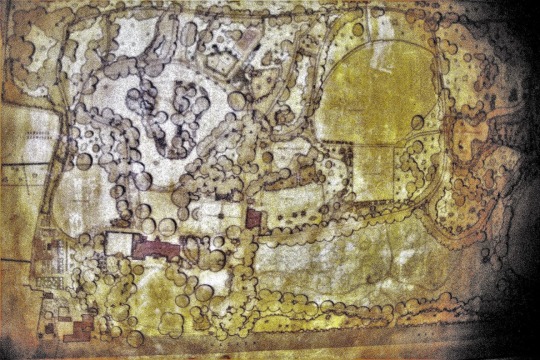
Sinds 2005 hebben we verschillende kleine bosgebieden verworven en met elkaar verbonden. Daarna hebben we enkele cultuurhistorische elementen terug gebracht zoals de contouren van de tuinen van Carl Linnaeus, de Zwitserse brug en we hebben een blikvanger gebouwd waar vroeger een theehuis stond.
Vanuit het grote huis op de Hartekamp is dit te zien via een zichtas.
Sinds 15 oktober 2006 is Landschap Noord-Holland eigenaar van drie delen van de oorspronkelijke Overplaats van de Hartekamp.
Het gebied heet de Overplaats, omdat het vanuit het Landgoed de Hartekamp bezien aan de overkant van de Herenweg ligt. Meerdere landgoederen in Nederland hebben zo’n Overplaats.
De Overplaats van de Hartekamp is rond 1900 opgedeeld en verkocht. Een deel is bebouwd met villa’s of met appartementenflats.
Landschap Noord-Holland is nu eigenaar van drie van deze delen: Eikenrode in het noorden, Hagenduin in het midden en Linnaeus hof in het zuiden.
De eerste en laatste waren al opengesteld en daar is Hagenduin nu bijgekomen. Nu het gebied weer één geheel is, krijgt het zijn oorspronkelijke naam de Overplaats terug. Iedereen kan op de Overplaats een bijzonder leuke rondwandeling maken van ongeveer een uur.
Verassend zijn de enorme hoogteverschillen en de monumentale bomen. In het voorjaar is vooral het zuidelijke deel rijk aan stinsenplanten, waaronder enkele hele zeldzame.
Landgoed de Hartekamp was ooit één van de belangrijkste landgoederen in Noord-Holland. Het belangrijkste deel van het landgoed met het huis ligt aan de westkant van Herenweg. Op de Overplaats liepen damherten en stond een fraai theehuisje.
Het landgoed heeft verschillende stijlen gehad. Het landgoed is in het begin van de 18e eeuw aangelegd in de Franse geometrische stijl. Later is het gebied weer op de schop gegaan om het aan te passen aan de Engelse landschapsstijl, zoals de mode voorschreef.
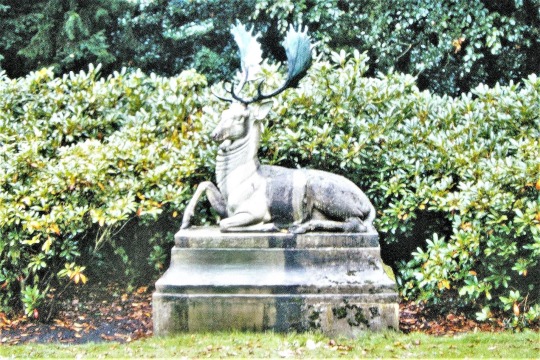
Er zijn nog enkele cultuurhistorische elementen. Op de grens met de speeltuin staan nog twee poortjes uit de begintijd van het landgoed, toen hier de moestuin was. De plek waar vroeger het theehuis stond is alleen nog te herkennen aan de fundamenten.
Op de Hartekamp werd van 1736 tot 1738 een student uit Zweden aangesteld als lijfarts en 'hortulanus'. Een hortulanus moest de planten uit de tuin en kas catalogiseren, het herbarium en bibliotheek verzorgen en nieuwe planten verwerven. Deze Zweedse student was Carolus Linnaeus, die later wereldberoemd werd met het classificatiesysteem voor het planten- en dierenrijk dat nog steeds wereldwijd gebruikt wordt.
Beschrijving HARTEKAMP
De hoofdmassa van het huis bestaat nog altijd uit het huis dat Johan Hinloopen in 1693 liet bouwen. Dit bestaat uit een kelder, twee bouwlagen en een met pannen gedekt schilddak. De voorgevel is totaal zeven traveeën breed en wordt geleed door het iets terugliggende middendeel van drie traveeën. met een geaccentueerde ingangstravee waarvoor een stoep en een bordes.
De beide vooruitspringende hoekpartijen zijn beide twee traveeën breed. Op de hoeken zijn vanouds geblokte lisenen aangebracht. Boven de kroonlijst is in de tweede helft van de 19de eeuw een soort attiek in hout aangebracht.
De middelste dakkapel heeft sinds de 18de eeuw een torenachtige opbouw met daarin opgenomen een klok. De achtergevel is vlak met in het midden de driezijdig uitgebouwde koepel na de verbouwing van begin jaren 1920 over twee bouwlagen en met een driezijdig dak beëindigd.
Tot de oorspronkelijke opzet behoren ook de aan de korte zijgevels uitgebouwde trappenhuizen. M.n. op de begane grond zijn deze opgenomen in de door Van der Steur gemaakte zijvleugels.
Aan de voorzijde zijn de uitbreidingen uit de beginjaren 1920 van Berchtenbreiter prominent aanwezig. Deze naar voren uitstekende paviljoenachtige bouwdelen zijn slechts één bouwlaag hoog en hebben een plat dak. De middelste travee van drie is uitgevoerd als rondboogvormige nis waarin een vroeg 20ste-eeuws beeld staat opgesteld. Rechts voorstellende Diana met hert links Flora. Alle vensters zijn in de eerste helft van de 19de eeuw vervangen door empire vensters en voorzien van persiennes. De vensters in de nieuwere vleugels zijn hierop aangepast. Het geheel, oorspronkelijke huis en nieuwe vleugels, is gepleisterd waarbij het motief van geblokte hoeklisenen is overgenomen in de nieuwe vleugels. Hierdoor is een grote mate van eenheid verkregen met een paleisachtige allure.

Het huis is in gebruik als kantoor. Onder meer van belang is de ruimtelijke indeling, die in grote lijnen bewaard is gebleven met als centraal punt de achtzijdige centrale hal over beide bouwlagen, bekroond met een lichtkoepel waarin een uurwerk is opgenomen. Door het nieuwe gebruik is in de loop van de tijd het nodige aan interieurafwerking verloren gegaan, maar door het gehele huis worden nog wand- en plafondafwerkingen gevonden alsmede schouwen en kastenwanden.
Twee identieke HEKPARTIJEN. De ellipsvormige oprijlaan wordt aan beide zijden gemarkeerd door een identieke hekpartij uit het begin van de 19de eeuw bestaande uit met een blokpatroon versierde hardstenen pijlers bekroond door een lantaarn. Daartussen een eenvoudig ijzeren hek.
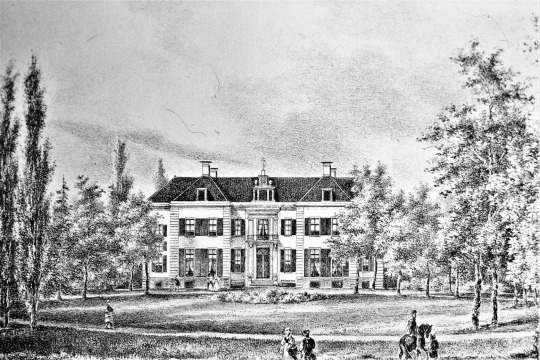
Als fontein gebruikte VAAS of bekken uit de tweede helft van de 19de eeuw, bestaande uit een groot rond bassin rustend op een middenzuil aan drie zijden extra ondersteund door op leeuwenpoten rustende pilaartjes. Het bekken is versierd met leeuwenkoppen. De middenzuil is getordeerd boven een voet met acanthusblad en de pilaartjes zijn gedecoreerd met eikenrank motief.
24-4-2022
#Bennebroek#Heemstede#Haarlem#Hartekamp#Geschiedenis#Duin-#Bollenstreek#Hillegom#Overplaats#Lineaushof
0 notes
Text
916, octubre, 10:
Facta cartula donationis VI idus Octubris, Era DCCCCª LIIIIª.
(Christus) Dulcidius presbiter hanc cartam donationis a me facta manu mea (signum).
(Christus) Dauid presbiter, testis (signum).
(Christus) Addala presbiter, testis (signum).- Eugenius diaconus, ts. (signum).
(Christus) Sisnandus presbiter, ts (signum).
(Christus) Euelso presbiter, ts.
(Christus) Marcus presbiter,…
View On WordPress
0 notes
Text
Mai mult decât oricare alt oraș din România, Alba-Iulia ne vorbește despre cultură, despre istorie, amintind la fiecare colț de stradă, parcă, momentele importante ale trecutului românesc și implicarea cetățenilor orașului.
O istorie zbuciumată și glorioasă, scrisă de cei care au cultive idealuri de unitate și identitate. Înainte de orice, Alba-Iulia este sinonim cu România Mare.
Turiștii prin Alba-Iulia au șansa să călătorească prin istoria scrisă de-a lungul a două milenii, în trei epoci diferite. Astfel, principala fortificație a Transilvaniei, celebra Cetate Alba-Iulia, a fost construită la ordinul principelui Eugeniu de Savoia. A fost ridicată în prima jumătate a secolului al XVIII-lea, în timpul împăratului Carol al VI-lea.
În prezent, Cetatea Alba-Iulia este monument istoric. A fost construită pe locul altor două fortificații, Castrul Roman (anul 106 d.C.) și Cetatea Medievală Bălgrad (secolele XVI-XVII). Vestigii ale acelor vremuri se păstrează până azi.
Și totuși, sunt câteva lucruri puțin știute despre Alba-Iulia. Iată o listă cu cele mai relevante:
Alba-Iulia – Orașul morții
Alba-Iulia a cunoscut unul dintre cele mai negre episoade din istoria sa, în timpul invaziei tătare dintre 1241 și 1243. Acest episod a fost descris de călugărul italian Rogerius. El povestește cum, fugind din calea tătarilor, s-a refugiat la Alba-Iulia.
Rogerius descrie Alba-Iulia ca fiind un oraș plin de oase și de capetele celor uciși, în care zidurile bisericilor și palatelor erau stropite cu sânge din belșug. Alba-Iulia era un oraș gol, din care populația dispăruse. Tabloul acesta cu descrierea amănunțită apare în lucrarea sa, denumită „Carmen Miserabile” (Cântec de Jale).
Rândul Sibiului să fie atacat şi cucerit a venit la 11 aprilie 1241. Apoi, rând pe rând, au căzut în mâna mongolilor Sebeşul, Orăştia şi Aradul. De aici, o parte dintre mongoli au plecat mai departe spre Ungaria, iar o parte au trecut în Muntenia.
Marea Unire de la 1918 – imortalizată în doar 5 fotografii
Fotograful Arthur Bach, angajatul oficial de către organizatorii Marii Adunări Naţionale de la Alba Iulia, nu s-a prezentat pentru a imortaliza evenimentele din 1918.
Dintr-o întâmplare, Samoilă Mârza a ajuns “fotograful Unirii” și a realizat singurele fotografii ale Marii Adunări Naționale de la 1 Decembrie 1918. Din cauza tehnicii de fotografiere și a vremii, Samoilă Mârza a reușit să realizeze doar cinci fotografii.
Samoilă Mârza nu a avut acces în Sala Unirii, pentru că nu avea permisul de acces la adunarea din Sala Unirii şi din sală nu există nicio fotografie. Celebrul aparat cu burduf care a imortalizat Marea Unire face acum parte din colecția expozițională a Muzeului Național al Unirii.
Mișcarea feministă din Transilvania, contribuție importantă la realizarea Marii Unirii
Născută după revoluția pașoptistă, respectiv, în anul 1850, a avut loc prima reuniune a femeilor române în Transilvania. Scopul mișcării a fost lupta pentru libertate și unitate națională, nu așa cum a fost în Europa, lupta pentru a obține drepturi egale cu cele ale bărbaților.
Maria Baiulescu, președinta Uniunii femeilor române din Ungaria, spunea că ���Numai femeia este capabilă să păstreze tezaurului naționalității”. Se considera că „emanciparea reală a femeii poate fi realizată numai după emanciparea deplină a națiunii”. Mișcarea feministă a avut 61 de reprezentante la Marea Adunare Națională de la Alba-Iulia.
Articol scris de Adriana Roman
Fotografii și sursa informației https://www.vice.com/, http://romaniainterbelica.memoria.ro/
3 lucruri puțin știute despre Alba-Iulia Mai mult decât oricare alt oraș din România, Alba-Iulia ne vorbește despre cultură, despre istorie, amintind la fiecare colț de stradă, parcă, momentele importante ale trecutului românesc și implicarea cetățenilor orașului.
0 notes
Text
Post #3
1) In politics, women haven’t always been involved due to social norms. This is a field that was always predominantly male and seemed to excluded women from holding any sort of position of power. Similarly, in the past women had been excluded from having careers in music. In the article, When Were Woman First Allowed in the Orchestra, the author states that until the 20th-century women weren’t allowed in the orchestra. The gender gap within the fields of music and politics is still very apparent today. In the article, By the Numbers: Female Composers, the author talks about the disparity between the number of male and female composers and how it has prevented females from even trying to peruse a career as a composer. This could be for a number of reasons such as believing that they won’t be accepted or successful within the industry because there aren’t very many women doing it. I think that a similar idea can be applied to politics and may be a reason for why we don’t see very many women running for president or any political position for that matter. After reading this article I was surprised to find out that with all the other aspects of life moving more towards equality that music is still lacking so far behind.
2) After reading about Hildegard, something that I thought was interesting was that she had been having visions from a very young age. However, she did not tell anyone about the visions until she was much older and when she did people actually believed her. Even the pope, Eugenius III, heard about these visions and instead of telling she was crazy and to stop sharing these visions he blessed her and told her to start writing them down. It was also interesting to find out that Hildegard was mentioned on a long list of people who were considered to witches during this time period.
3) The texture of the first piece, O Vis Aeternitatis, is monophonic. In class, we defined monophony as a single voice and this piece fits that description.
4) I believe that the tonality of this piece is major. When I hear this piece it does sound pretty happy, but it does also sound kind of medieval so it could be modal. I’m really not that sure about this stuff yet. I think I need some more practice.
5) In Latin the title, O Vis Aeternitatis, means Power of Eternity.
6) After doing the reading and finding out that Hildegard was a very religious person and was very involved in the church I believe that this was a piece that may have been written to God. In the lyrics, it says “All things you held in order in your heart, and through your Word were all created according to your will” which one can interpret as Hildegard singing to God. This makes sense because I feel like this sounds like something I would hear in church. I think that It was created to sound this way because Hildegard was a nun and she was around church music a lot.
0 notes
Text
New Post has been published on THIẾT BỊ KHOA HỌC CÔNG NGHỆ
New Post has been published on http://thietbikhoahoccongnghe.com.vn/?p=4007
Sinh thái học - Phần 15
Bắt đầu sớm
Sinh thái có nguồn gốc phức tạp, phần lớn do tính chất liên ngành của nó . Các triết gia Hy Lạp cổ đại như Hippocrates và Aristotle là những người đầu tiên ghi nhận những quan sát về lịch sử tự nhiên. Tuy nhiên, họ đã xem cuộc sống về mặt chủ nghĩa duy vật, nơi mà các loài được khái niệm hoá như những vật không thay đổi tĩnh trong khi các giống được coi là những sai lệch của một kiểu lý tưởng hóa. Điều này tương phản với sự hiểu biết hiện đại của lý thuyết sinh thái nơi mà các giống được xem là hiện tượng thực sự quan tâm và có vai trò trong nguồn gốc của sự thích nghi bằng các phương tiện chọn lọc tự nhiên Những khái niệm ban đầu về sinh thái, như sự cân bằng và quy luật tự nhiên có thể được tìm thấy ở Herodotus (mất năm 425 TCN), người đã miêu tả một trong những tài liệu về sự tương đồng sớm nhất trong quan sát của ông về “nha khoa tự nhiên”. Những con cá sấu ở Bask Nile, ông lưu ý, sẽ mở miệng để cho những người cọ xát có thể tiếp cận được với những con đỉa bị cắn ra, cho ăn chất dinh dưỡng cho con cọp và vệ sinh răng miệng cho con cá sấu Aristotle là một ảnh hưởng ban đầu đến sự phát triển triết học của sinh thái học. Ông và sinh viên Theophrastus của ông đã có những quan sát sâu rộng về di cư thực vật và động vật, sinh học, sinh lý, và hành vi của chúng, tạo ra một tương tự sớm đối với khái niệm hiện đại của một hốc sinh thái
Các khái niệm sinh thái như chuỗi thức ăn, điều tiết dân số, và năng suất được phát triển lần đầu tiên vào những năm 1700, thông qua các tác phẩm đã được công bố của nhà kính hiển vi Antoni van Leeuwenhoek (1632-1723) và nhà thực vật học Richard Bradley (1688? -1732). Nhà sinh học Alexander von Humboldt (1769-1859) là người đi tiên phong trong tư duy sinh thái và là một trong những người đầu tiên nhận ra các gradients sinh thái, nơi các loài được thay thế hoặc thay đổi theo hình dạng dọc theo các mức độ môi trường, như hình thành cline dọc theo sự gia tăng độ cao. Humboldt đã lấy cảm hứng từ Isaac Newton khi ông phát triển một dạng “vật lý trên cạn”. Trong thời Newton, ông đã mang một tính chính xác khoa học để đo lường vào lịch sử tự nhiên và thậm chí ám chỉ đến các khái niệm là nền tảng của một luật sinh thái hiện đại về các mối quan hệ giữa các loài với khu vực Các nhà sử học tự nhiên, như Humboldt, James Hutton, và Jean-Baptiste Lamarck đã đặt nền móng cho các khoa học sinh thái hiện đại . Thuật ngữ “sinh thái học” (tiếng Đức: Oekologie, Ökologie) có nguồn gốc gần đây hơn và được đặt tên bởi nhà sinh vật học người Đức Ernst Haeckel trong cuốn Generelle Morphologie der Organismen (1866). Haeckel là một nhà động vật học, nghệ sĩ, nhà văn, và sau này là một giáo sư về giải phẫu so sánh
Vì lý thuyết sinh thái, chúng ta muốn nói đến toàn bộ khoa học về các mối quan hệ của cơ thể với môi trường, bao gồm, theo nghĩa rộng, tất cả “điều kiện tồn tại”. Vì vậy lý thuyết tiến hóa giải thích mối quan hệ giữ gìn vệ sinh của các sinh vật một cách cơ học như những hậu quả cần thiết của hiệu quả nguyên nhân và do đó tạo thành nền tảng độc đáo của sinh thái học.
Ernst Haeckel (1866)
Nicola Perscheid – Ernst Haeckel.jpg Warming, Eugen-c1900.jpg
Ernst Haeckel (trái) và Eugenius Warming (phải), hai người sáng lập về sinh thái
Ý kiến khác nhau về ai là người sáng lập ra lý thuyết sinh thái hiện đại. Một số đánh dấu định nghĩa của Haeckel như là sự khởi đầu, những người khác nói rằng đó là Eugenius Warming với văn bản của Oecology of Plants: Một nghiên cứu về các cộng đồng thực vật (1895) hoặc các nguyên tắc của Carl Linnaeus về nền kinh tế tự nhiên đã trưởng thành vào đầu thế kỷ 18. Linnaeus thành lập một chi nhánh đầu tiên về sinh thái mà ông gọi là nền kinh tế của tự nhiên . Tác phẩm của ông ảnh hưởng đến Charles Darwin, người đã sử dụng cụm từ của Linnaeus về nền kinh tế hoặc thiên nhiên của tự nhiên trong Nguồn gốc các loài [. Linnaeus là người đầu tiên đưa ra sự cân bằng thiên nhiên như là một giả thuyết có thể kiểm chứng được. Haeckel, người ngưỡng mộ công trình của Darwin, đã định nghĩa sinh thái dựa trên nền kinh tế tự nhiên, điều này đã khiến một số người đặt câu hỏi liệu sinh thái và nền kinh tế tự nhiên có đồng nghĩa với nhau hay không.
Cách bố trí của thí nghiệm sinh thái đầu tiên, được thực hiện trong một khu vườn cỏ ở Tu viện Woburn năm 1816, được Charles Darwin ghi lại trong cuốn Xuất xứ của Loài. Thí nghiệm đã khảo sát hiệu suất của các hỗn hợp khác nhau của các loài được trồng trong các loại đất khác nhau
Từ Aristotle cho đến Darwin, thế giới tự nhiên chủ yếu được coi là tĩnh và không thay đổi. Trước sự xuất hiện của các loài, ít có sự đánh giá cao hay hiểu biết về mối quan hệ năng động và đối ứng giữa các sinh vật, sự thích nghi của chúng và môi trường Một ngoại lệ là cuốn Lịch s��� tự nhiên của Selborne năm 1789 của Gilbert White (1720-1793), được coi là một trong những văn bản đầu tiên về sinh thái . Trong khi Charles Darwin chủ yếu chú ý đến luận điểm của ông về tiến hóa, ông là một trong những người sáng lập ra hệ sinh thái đất, và ông đã lưu ý thí nghiệm sinh thái đầu tiên trong cuốn Nguồn gốc các loài Lý thuyết tiến hóa thay đổi cách mà các nhà nghiên cứu tiếp cận sinh thái học
0 notes
Text
Events 8.22
392 – Arbogast has Eugenius elected Western Roman Emperor.
851 – Battle of Jengland: Erispoe defeats Charles the Bald near the Breton town of Jengland.
1138 – Battle of the Standard between Scotland and England.
1485 – The Battle of Bosworth Field, the death of Richard III and the end of the House of Plantagenet.
1559 – Bartolomé Carranza, Spanish archbishop, is arrested for heresy.
1614 – Fettmilch Uprising: Jews are expelled from Frankfurt, Holy Roman Empire, following the plundering of the Judengasse.
1639 – Madras (now Chennai), India, is founded by the British East India Company on a sliver of land bought from local Nayak rulers.
1642 – Charles I raises his standard in Nottingham, which marks the beginning of the English Civil War.
1654 – Jacob Barsimson arrives in New Amsterdam. He is the first known Jewish immigrant to America.
1711 – Britain's Quebec Expedition loses eight ships and almost nine hundred soldiers, sailors and women to rocks at Pointe-aux-Anglais.
1717 – Spanish troops land on Sardinia.
1770 – James Cook names and lands on Possession Island, and claims the east coast of Australia for Britain as New South Wales.
1777 – British forces abandon the Siege of Fort Stanwix after hearing rumors of Continental Army reinforcements.
1780 – James Cook's ship HMS Resolution returns to England (Cook having been killed on Hawaii during the voyage).
1791 – Beginning of the Haitian Slave Revolution in Saint-Domingue, Haiti.
1798 – French troops land at Kilcummin, County Mayo, Ireland to aid the rebellion.
1827 – José de la Mar becomes President of Peru.
1846 – The Second Federal Republic of Mexico is established.
1849 – The first air raid in history. Austria launches pilotless balloons against the city of Venice.
1851 – The first America's Cup is won by the yacht America.
1864 – Twelve nations sign the First Geneva Convention, establishing the rules of protection of the victims of armed conflicts.
1875 – The Treaty of Saint Petersburg between Japan and Russia is ratified, providing for the exchange of Sakhalin for the Kuril Islands.
1894 – Mahatma Gandhi forms the Natal Indian Congress (NIC) in order to fight discrimination against Indian traders in Natal.
1902 – Cadillac Motor Company is founded.
1902 – Theodore Roosevelt becomes the first President of the United States to make a public appearance in an automobile.
1902 – At least 4,000 people are killed by the 1902 Turkestan earthquake in the Tien Shan mountains.
1922 – Michael Collins, Commander-in-chief of the Irish Free State Army, is shot dead in an ambush during the Irish Civil War.
1934 – Bill Woodfull of Australia becomes the only test cricket captain to twice regain The Ashes.
1941 – World War II: German troops begin the Siege of Leningrad.
1942 – Brazil declares war on Germany, Japan and Italy.
1944 – World War II: Holocaust of Kedros in Crete by German forces.
1949 – The Queen Charlotte earthquake is Canada's strongest since the 1700 Cascadia earthquake.
1953 – The penal colony on Devil's Island is permanently closed.
1962 – The OAS attempts to assassinate French president Charles de Gaulle.
1963 – X-15 Flight 91 reaches the highest altitude of the X-15 program (107.96 km (67.08 mi) (354,200 feet)).
1966 – Labor movements NFWA and AWOC merge to become the United Farm Workers Organizing Committee (UFWOC), predecessor of the United Farm Workers.
1968 – Pope Paul VI arrives in Bogotá, Colombia. It is the first visit of a pope to Latin America.
1971 – J. Edgar Hoover and John Mitchell announce the arrest of 20 of the Camden 28.
1972 – Rhodesia is expelled by the IOC for its racist policies.
1973 – The Congress of Chile votes in favour of a resolution condemning President Salvador Allende's government and demands that he resign or else be unseated through force and new elections.
1978 – Nicaraguan Revolution: The FLSN seizes the National Congress of Nicaragua, along with over a thousand hostages.
1978 – The District of Columbia Voting Rights Amendment is passed by the U.S. Congress, although it is never ratified by a sufficient number of states.
1981 – Far Eastern Air Transport Flight 103 disintegrates in mid-air and crashes in Sanyi Township, Miaoli County, Taiwan. All 110 people on board are killed.
1985 – British Airtours Flight 28M suffers an engine fire during takeoff at Manchester Airport. The pilots abort but due to inefficient evacuation procedures 55 people are killed, mostly from smoke inhalation.
1989 – Nolan Ryan strikes out Rickey Henderson to become the first Major League Baseball pitcher to record 5,000 strikeouts.
1991 – Iceland is the first nation in the world to recognize the independence of the Baltic states.
1992 – FBI sniper Lon Horiuchi shoots and kills Vicki Weaver during an 11-day siege at her home at Ruby Ridge, Idaho.
2003 – Alabama Chief Justice Roy Moore is suspended after refusing to comply with a federal court order to remove a rock inscribed with the Ten Commandments from the lobby of the Alabama Supreme Court building.
2004 – Versions of The Scream and Madonna, two paintings by Edvard Munch, are stolen at gunpoint from a museum in Oslo, Norway.
2006 – Pulkovo Aviation Enterprise Flight 612 crashes near the Russian border over eastern Ukraine, killing all 170 people on board.
2006 – Grigori Perelman is awarded the Fields Medal for his proof of the Poincaré conjecture in mathematics but refuses to accept the medal.
2007 – The Texas Rangers defeat the Baltimore Orioles 30–3, the most runs scored by a team in modern Major League Baseball history.
2012 – Ethnic clashes over grazing rights for cattle in Kenya's Tana River District result in more than 52 deaths.
2 notes
·
View notes
Photo

(via The Future Pope Pius XII's Dire Premonition Regarding the Catholic Church) The Suicide of Altering the Faith in the LiturgyCatholic Family News ^ | January, 2005 | Father Paul Kramer Posted on 2/19/2005, 11:32:36 AM by ultima ratioThe Suicide of Altering the Faith in the Liturgyby Father Paul KramerEditor’s Note: This is an edited transcript of a speech given at the Fatima Peace Conference in October, 2001. Father Kramer was trained at the Pontifical University of Saint Thomas Aquinas in Rome (the Angelicum) under whom he describes as “the last group of traditional Dominicans,” which had lasted until the 1970s. It contains sobering points on the nature of the New Mass and the Catholic’s obligation, enshrined in the Tridentine Profession of Faith, to adhere to the “received and approved rites,” that is, the Traditional Mass.The title “The Suicide of Altering the Faith in the Liturgy,” is not my own. It comes from a discourse of Pope Pius XII, who saw the imminent possibility of a crisis in faith and spoke of the Church doubting as Peter once doubted, recalling St. Peter’s denial of Our Lord on the night of His Passion.Pope Pius XII on the "Suicide of altering the faith in her liturgy"Msgr. Eugene Pacelli, the future Pope Pius XII, made the astonishing prophecy on the future upheavel in the Church:"I am worried by the Blessed Virgin's messages to Lucy of Fatima. This persistence of Mary about the dangers which menace the Church is a divine warning against the suicide of altering the Faith, in Her liturgy, Her theology and Her soul. … I hear all around me innovators who wish to dismantle the Sacred Chapel, destroy the universal flame of the Church, reject Her ornaments and make Her feel remorse for Her historical past."A day will come when the civilized world will deny its God, when the Church will doubt as Peter doubted. She will be tempted to believe that man has become God. In our churches, Christians will search in vain for the red lamp where God awaits them. Like Mary Magdalene, weeping before the empty tomb, they will ask, 'Where have they taken Him?'" - Roche, Pie XII Devant L'Historie, p. 52-53One method of the heretics for attacking the Church is to infiltrate the Catholic hierarchy and then change the liturgy to mute its explicit profession of faith, making the liturgy appear to uphold heretical doctrine. Pope Pius XII warned of this danger, “the suicide of altering the faith in the liturgy”.Many priests and faithful see no problem with the new Rite of Mass. They consider themselves upholders of Catholic tradition and are outspokenly anti-Modernist. But the subtleties of the devil are so great that they are tricked into consenting to the Modernist position without realizing it. It is like the treatment given to frogs: you put them into hot water and they will jump out of the water immediately, but if you put them into cold water and slowly heat it, they don’t notice the increase of heat until it’s too late. They’ve been cooked.I have seen this in the example of many Catholic bishops. Twenty-five, thirty years ago they were the staunchest arch-conservatives. But little by little they compromised, and toward the end of their mission as heads of their dioceses, they still considered themselves staunchly arch-conservative, upholding the apostolic traditions of the Church; but these men did not realize that hardly anyone else thought of them that way anymore. They were living in an illusion.I’m not going to mention names now; some of these bishops have been judged by Jesus Christ. There’s no need for me to make a judgment on them now.The error, all too often, is to think of apostolic tradition in terms of dogma and to regard faith and morals and everything else as simply disciplinary matters that may be changed, according to the will of the legislator, whether he be bishop, whether he be Pope.When St. Paul speaks of tradition he is not speaking merely of dogma. In 2 Thessalonians St. Paul says, “Hold fast to the traditions that you have received from us, whether by word or by letter.” There we have both the oral tradition and the written tradition. But he is not only referring to teaching. He himself makes this clear with one of the most famous expressions coming out of the New Testament. St. Paul says, “I have handed over that which I received.” He then explains what it is that he has received. What he describes is the Holy Mass. That the Lord, before He suffered, took bread saying, “This is My Body which is given up for you. This is the chalice of My Blood,” etc. So when St. Paul says “hold fast to the traditions” and “I have handed over that which I have received,” he refers specifically to the liturgy of the Holy Mass.There is so little understanding concerning the doctrine about liturgy in the Church that it has become almost entirely obscured. In the Summa of St. Thomas you find next to nothing about liturgy. The reason for this is quite obvious if you know the history of doctrinal development. When a point becomes controversial, that is when the theologians do a great deal of writing and speaking on that topic. But if a doctrine is not questioned, not much is said about it.The Christological controversies of the early ages and the development of the doctrine of transubstantiation — in what manner is there the Real Presence of Jesus Christ under the species of bread and wine — provoked a great deal of writing.The one thing that was the least questioned was the doctrine of liturgy, because it was so well and universally understood. The liturgy was a sacred patrimony handed down from generation to generation in the Church.The process of handing down is what we call tradition. Tradition, having been established, becomes custom. The liturgy grows gradually, as does a human being, in a natural organic way until it reaches its adulthood. It reaches the full term of its development and that is where the development ends. Then the form of the liturgy remains fixed and undergoes, from there on, very little change. In the life of tradition, there are always minor accretions and minor changes and, after a period of time, the liturgy needs to be trimmed again. And that’s when we have revision of the liturgy undertaken by the Roman pontiffs.After centuries of development, the Roman Rite was top-heavy and needed to be trimmed and codified. This is what Pope St. Pius V did.A major misconception in the post-Conciliar Church is that Pope Paul VI did what Pope St. Pius V did. In fact, we’re going to see that he did something quite the opposite.The first question we have to answer, however, is what the change in liturgy has to do with the Message of Fatima. And the answer, of course, is that it has everything to do with the Message of Fatima. Bishop Cosme do Amaral, the former Bishop of Leiria-Fatima, at the Technical University of Vienna, in 1984, spoke about the Third Secret as dealing with apostasy, the loss of faith, on entire continents.What does the change in liturgy have to do with the loss of faith? We will see it has everything to do with the loss of faith. Father Alonso spoke of the Third Secret as dealing with the deficiencies of the upper hierarchy of the Church and its contents as tending to vindicate those in the Church who are called Traditionalists.The Rule of Tradition on LiturgyOne of the main points of Traditional Catholics is to underline the importance of the Roman Rite of the Mass as opposed to the Rite of Paul VI, because of the deficiencies in the Rite of Pope Paul VI. As soon as you mention deficiencies in the Rite of Pope Paul VI, the so-called conservatives become very alarmed. They will say “But the Rite of Paul VI was promulgated for the whole Church and has the protection of infallibility. How can you dare to say that there is some defect in the new Rite of Mass when the Holy Ghost gives protection to the Pope in promulgating the rites for the whole Church?”What these people fail to understand is that they have not read the documentation very astutely for the so-called promulgation of the Missal of Pope Paul VI, which is called the Roman Missal fraudulently because the Rite of Mass contained therein is not the Roman Rite of Mass. It is not the Roman liturgy. It is what the great architect of the new Rite of Mass, Monsignor Annibale Bugnini, called a new creation. His right-hand man, Joseph Gelineau, S.J., said of the new rite, “We have to speak frankly. The Roman Rite no longer exists. It has been destroyed.” He should know. He was one of the principal destroyers.Here is something truly amazing to consider: Canon 846 of the New Code of Canon Law, the 1983 Code promulgated by Pope John Paul II, says that the ministers are to administer the sacraments according to their own Rite. This law simply reflects what is the doctrine of the Catholic faith. And there is infallible, magisterial Catholic teaching regarding the regulation of the Sacred Liturgy. This has been obscured and forgotten.First of all, let us consider what the Code of Canon Law means by “their own Rite”. For the Byzantine Catholics, who use the Divine Liturgy of St. John Chrysostom, because they are of the Byzantine Rite, their own liturgy is the Byzantine Liturgy.This is why the Council of Florence decreed, under Pope Eugenius IV, that those who are of the Eastern Rite are to confect the Holy Eucharist according to the custom of their Church, just as those who are of the Roman Rite must confect the Holy Eucharist according to the custom of the Roman Church.Now this was not an arbitrary pronouncement. It is rooted in the doctrine that the law of custom governs the liturgy. What is so sacred about custom? Why does custom govern the liturgy? Because custom is established by tradition, and the law of tradition is set forth in Sacred Scripture. St. Paul did not make any innovations in the liturgy that he received. “I handed over that which I have received.”So the Sacred Scripture establishes the rule of tradition; tradition establishes custom; and therefore the Council of Florence in making its solemn definition applied the principle that custom governs the liturgy when defining that those who are of the Greek Church must use leavened bread and those who are of the Roman Church must use unleavened bread.Canon 27 of the New Code of Canon Law explains that custom is the best interpreter of the laws. So when we look at liturgical law in the spirit of canonical tradition, that is to say, authentically understand the law as it was meant to be understood, then it must be understood according to that tradition that has established the ecclesiastical and liturgical customs. This is how important custom is in determining the sense, the meaning, of law.Among the ancient Fathers we have St. John Chrysostom, who says it in one line: “Is it tradition? Ask no more.”Among the medieval Doctors we find not too many pronouncements, but what we find is unanimously taught by such as St. Peter Damien and others who insist that you must not change the landmarks. What has been handed down is not to be altered. So much so that even if the Pope should make a change in the universal customs of the Church, he should not be followed. A book dealing specifically with custom, a theological treatise written by the great Pope Innocent III, says if the Pope makes changes in the universal customs of the Church, he is not to be followed.Now we have so many bishops who insist that priests and faithful adhere to this new Rite of Pope Paul VI because, they claim, that it was decreed by the Pope and therefore, in humble obedience, we must accept it; that we’re not loyal Catholics if we insist on adhering to the old Rite. But here we have the teaching of the Fathers and Doctors of the Church who insist on adherence to the traditional liturgy in the Church. Here we have one of the greatest Popes explaining that if the Pope should dare to make such changes, he is not to be followed.And then it goes even further. Cardinal Torquemada was named by Pope Eugenius IV to be the official theologian of the Council of Florence, which upheld the principle that custom governs the liturgy. Cardinal Torquemada explains in quoting Pope Innocent III — in that book I just mentioned, that if the Pope should attempt to change the customs of the Church, especially the liturgical Rites, if he were to attempt to change the Church’s liturgical ceremonies, he would commit an act of schism.A century later, the great Suarez, who was named by Pope Paul V as the most pious and excellent Doctor, explained that “if the Pope were to attempt to change the liturgy, he would fall in schism.” This is the pontifically approved teaching of the two greatest theologians of their respective centuries. It was acknowledged that what they were teaching indeed is an expression of the mind of the successors of Peter in their Magisterium.Now this leads us to that day in 1969, November 19. Pope Paul VI, in his Wednesday audience, makes the announcement that there is going to be a change in the liturgy in the Latin Church. Mass is going to be celebrated differently than it has been celebrated before. And he notes how strange this is because of the Mass being considered as the traditional and untouchable expression of our religious cult and our faith.Evidently Pope Paul VI did not consider that point very deeply. In what manner?, he should have asked. In what manner is the Mass considered to be the traditional and untouchable expression of our religious cult? The answer to that question is that it is the infallible teaching of the Catholic faith that we must embrace and adhere to the traditional Rites of our respective ritual Churches.One time I spoke with a priest about this question and before I could even get the argument out of my mouth, he said “this can’t be a matter of faith because the Tridentine Mass, the Roman Rite, didn’t even exist at the time of the death of the last apostle. So how can the Tridentine Mass be a matter of divine law?” And that’s when I said, “I’ll answer your question. The law of God is expressed in the infallible professions of faith. The Tridentine Profession of Faith binds all Catholics to adhere to the traditional liturgy, the received and approved Rites. Why are they called received and approved? Because they are approved in-so-far as they have been hallowed by tradition, the authoritative handing down of the Rites. They are the very patrimony that we have received down through the ages from apostolic tradition, from the Fathers. We have received our sacred liturgy through the vehicle of tradition. It is not an authentic liturgy if it has not been received through the vehicle of tradition. And that is because the law of God, as it is defined by the Church and explained by St. Paul, is that the liturgy is to be handed over by the vehicle of tradition.Pope Paul VI, not understanding that this is a matter of divine and Catholic Faith solemnly professed in the Tridentine Profession of Faith, announced that this liturgy was going to be changed. There would be great changes in the liturgy. And how can this be, since the Mass, as Montini himself admitted, is considered to be the untouchable, traditional expression of our religious cult and our faith?When we speak of the loss of faith we are told about by Our Lady of Fatima in the Third Secret, we can see this point had already been obscured. Since the Protestant Reformation there has been such an emphasis on doctrinal clarity in the refutations of the false doctrines of the Protestants that the Church’s teaching regarding liturgy has been neglected. And being neglected, it was forgotten. And so when the changes were made, they were put into practice by those who, in positions of high authority, had neglected the Church’s teaching in making these changes. And this is why the Third Secret deals with the negligence of the pastors in the upper hierarchy of the Church.The “Promulgation” of the New Mass?Before I get to Vatican II’s Sacrosanctum Concilium, I must point out that if we read very astutely the decree Missale Romanum of Pope Paul VI, we’ll see that Pope Paul VI never decreed, he never promulgated, the new Rite of Mass to replace the old Rite. In fact, he never properly promulgated the Mass at all.In one of my conversations with the late Bishop Salvador Lazo I pointed out, “Your Excellency, you must be very astute when you read these documents because they are very tricky. They seem to insinuate and imply one thing, without actually stating it. They have the appearance of decreeing something into law, but if you look very carefully, nothing at all is decreed.” Bishop Lazo answered me, “but Rome, the Vatican, the heads of the Roman Curia, the dicasteries, they’re our Spiritual Fathers. Our relationship to them is that of filial piety to our Spiritual Fathers. So we did not expect that we needed to read their documents so astutely.” And he became very angry because he said “they took advantage of our filial piety and they tricked us.”At the end of the sessions of Vatican II, some of the bishops asked the Council Secretary Carinal Pericle Felici for what theologians call the "theological note" of the Council. Cardinal Felici replied, "We have to distinguish according to the schemas and the chapters those which have already been the subject of dogmatic definitions of the past; as for the declarations which have a novel character, we have to make reservations."In the Vatican II, so- called, Roman Missal, which does not have the Roman Rite in it but the Rite of Pope Paul VI, you will see at the end of the document that Pope Paul VI very solemnly says “what we have decreed will go into force on the following November 30 of next year.” Now people read that, as they did more than thirty years ago, “What we have decreed is going to have the force of law next November. That means this missal is going to be the law of the Church. This is the missal that we have to use starting next November.” That was the impression they wanted to create. But they would not take the responsibility of actually legislating that.Then you re-read the entire document. Read the whole thing again. What was decreed? What actually did that document decree? What did he so solemnly declare was going to have the force of law in the following November? There are precisely two decrees in that apostolic constitution, Missale Romanum, of Pope Paul VI. He decrees that three new Eucharistic prayers are to be printed in this book. He decrees what are to be the words of consecration that are to appear in all four Eucharistic prayers. That is the only thing that he decrees in that entire document, the so-called Roman Missal. Read it carefully. You will see that there is nothing else decreed in the entire document. A new Rite of Mass is not promulgated in that decree.Look at Pope Pius V’s Quo Primum Tempore; now that is promulgation. Henceforth, in perpetuity, this missal is to be used by all priests in all churches of the Roman Rite, in all religious houses, and except for those Rites that are more than 200 years old, all other missals are henceforth to be utterly discarded. Now this is what we call legislation. Missale Romanum of Pope Paul VI merely presents a book and makes decrees on some new prayers to be printed in the book; there is nothing of a disciplinary nature in it. The new missal is not prescribed to be used, or even permitted to be used, by anyone. There is no authorization whatsoever for the use of that new missal by Pope Paul VI.Who are subject to the use of this new missal? Not a single word. Who may use this missal? Where may it be used? Not a single word. That’s why we have the very curious arrangement. In the title of the document it says ‘promulgation’. We read the text of the document and we see that nothing has been promulgated. Just imagine if the solemn definition of the Assumption of the Blessed Virgin Mary into Heaven were missing the one key passage where Pope Pius XII says we define, we state, we declare that it is a dogma, a revealed dogma of the Catholic faith that the Blessed Virgin Mary, at the end of Her life was assumed, body and soul, into Heaven. What would be the dogmatic value, the dogmatic force of that document? It would be absolutely worthless. It would not be a definition if it did not have that line. No matter what the title of the document, no matter how many pages of solemn language is in that document, if that one sentence where the actual definition is made does not appear in that document, then the document is null and void. As a definition, it’s nothing. It’s worthless.Now it pertains to the very nature of a law that a law must be prescriptive in its words. In other words, the law must command, it must impose an obligation on those who are subject to the law. It must be clear who are subject to the law. It must be clear exactly what is being commanded. If these things are not found in a precept, or in a law, then it is simply not a law, because that which constitutes the very essence, the very substance of law, is missing. A law that does not command the subject to do or not to do something is like a definition that does not define. “Lex dubia lex nulla.” A doubtful law is no law. “Lex dubia non obligat,” the dubious law does not bind, because a law must clearly give a precept — impose a legal obligation on those who are specified as the subjects.Missale Romanum plainly fails to do this. It is not a law regarding the discipline of the Church. It does not command or authorize anyone to use the missal of Pope Paul VI. And this is why we find a second promulgation. Missale Romanum calls itself a promulgation. Turn the page after you reach the end of the document and you find a promulgation by the Sacred Congregation for Divine Worship signed by Cardinal Gut, promulgating the new missal after it was just purportedly promulgated by Pope Paul VI in Missale Romanum. Very strange indeed.It is impossible for a Cardinal Prefect of a Roman congregation, even with authorization from the Pope, to overrule and abrogate the solemn decrees of a Roman Pontiff in an apostolic constitution. That’s clear even from the 1983 Code of Canon Law. It is the embodiment of an ancient legal principle that has been in the Church’s canonical tradition for centuries and centuries: “inferior non potest tollere legem superioris”.But the promulgation of Cardinal Gut did not even attempt to suppress the missal of Pope Pius V. It went so far only as to permit the use of the new missal, stating that the bishops are the ones who will be given the authority to say when the new missal may be used. That’s as far as the promulgation of the new missal ever went. It is only a permision. It is to be implemented by the bishops. It is an error, therefore, for anyone to say that the missal of Pope Paul VI was promulgated for the universal Church of the Latin Rite. It simply was not. It was only given that appearance. But the key phrases that would constitute a law, a true promulgation as a law for the universal discipline of the Church, is nowhere to be found in the apostolic constitution Missale Romanum.Therefore, priests trained by Opus Dei present a baseless argument when they say “Well, Father, how can there be defects? How can there be anything wrong with the new Mass since it was promulgated for the Universal Church?” That’s an error of fact. It was never promulgated for the whole Church. It is only permitted by way of exception.Is the new Mass defective? Indeed it is. The Second Vatican Council decreed how the revision of the liturgy must be carried out. I quote the exact words of Sacrosanctum Concilium. “It must be revised carefully in the light of sound tradition.” The basic principle of tradition in the development of liturgy is a gradual organic growth, like the child who grows up to be an adult. If we cut off the head and transplant the head of someone else on a human being, that would not be a natural organic development. Yet there were wholesale amputations done on the venerable customary liturgy of the Roman Church.The Council decreed that “due care must be taken to preserve the substance of the liturgical Rites”. — Sacrosanctum Concilium, 23. Then the reform was carried out and implemented and the head of the concilium (which was the body constituted by Pope Paul VI to revise the liturgy), Monsignor Bugnini, declares that it is truly a new creation; and his right-hand man, Father Gelineau, says the Roman Rite has been destroyed. It no longer exists.I’d like to know what happened to the due care to preserve the substance of the Rites!An Ecumenical LiturgyAnother of that gang of liturgical vandals was Father Carlo Braga. The Council decreed that the liturgy must be restored according to the pristine norms of the Holy Fathers. According to the liturgical reformers who created the new Rite, they made their changes with what Father Braga called “an ecumenical dimension and” now ponder these words, “a new foundation of Eucharistic theology”. No longer the theology of the Council of Trent, the doctrine of St. Thomas Aquinas. But a new foundation of Eucharistic theology.And as we go through them one by one, we see that the changes made in the liturgy reflect exactly those changes undertaken by the Protestant Reformers in the 16th Century. Does it not seem to be more than coincidence that all the changes made in the liturgy were precisely those made by the Protestant Reformers? And whatever was found to be offensive to the Protestants, whatever was most dear to traditional Catholic Eucharistic doctrine and the doctrine of the Holy Mass, was either toned down or removed altogether from the liturgy, so that one of the Protestant observers at Vatican II, who helped and gave advice in making the new liturgy, said that “Evangelical Protestants with all tranquility may use this new Rite of Mass.” The “new foundation” of Eucharistic theology is clearly Protestant.But when we speak of restoration of the liturgy according to the pristine norms of the Holy Fathers, what this means is expressed in the words of Pope Leo XIII, where he explains in Orientalum Dignitas, that the Church allows and makes provision for some innovations in exterior forms, mostly when they are in conformity with the ancient past, which is to say, mostly when those changes are in the nature of a restoration. This is exactly what Pope St. Pius V did. He restored the liturgy according to the norms of the ancient Fathers. This was the expressed will of the Council of Trent according to the custom and the norm of the ancient Fathers. Sacrosanctum Concilium used that almost identical expression — according to the pristine norms of the Holy Fathers.This makes it very clear that it is unlawful to make radical changes in the liturgy that reflect a Protestantized doctrine of the Mass and the sacraments in general, and the Holy Eucharist in particular.The need to preserve the substance of the liturgical Rites is a matter of faith. As I pointed out, it is in the Tridentine Profession of Faith that Catholics are enjoined to hold onto, to embrace, to receive and admit those Rites which are the received and approved Rites of the Sacred Liturgy used in the Catholic Church in the solemn administration of the sacraments.Sometimes those who would defend the new liturgy will point to some theologian like Tanqueray, or others, who said that the Rites may be changed by no one except the Pope. I must ask the question: Could the Popes have been wrong in their solemn profession for 600 years? The very first act made by a Pope starting with Pope St. Agatho was to make a solemn profession and oath upon his coronation as Roman Pontiff in which he solemnly swore and solemnly professed that he did not have the power and he would not change the discipline and the Rite of the Church. He invokes the wrath of God upon himself if he should dare to change it or allow it to be changed.Now this does not mean that absolutely nothing can ever be changed in the liturgy? As I pointed out, according to the teaching of Pope Leo XIII, changes that are mainly of a nature of a restoration, can be made. Minor accretions are permitted. And it pertains to the authority of the Pope to restore the liturgy, to preserve the liturgy, as was taught by Pope Pius XI. It is the duty of the Popes to preserve the liturgy and to protect it from adulteration.For 600 years, that solemn Oath of Profession was made by one Pope after another from the days of St. Agatho until Pope Boniface VIII. It has been explained by various Popes that the Pope has the power to modify the discipline of the Church, to modify it according to the present needs of the Church. But to make modifications is one thing. To make drastic alterations, to abolish it altogether and replace it with something else, is something that the Popes have solemnly professed for 600 years that they do not possess the power to do.Pope Boniface VIII did not make that oath of coronation because of the political situation at the time. There was the tension between the Pope and King Philip the Fair, of France, who in fact eventually attacked the Pope’s forces, besieged Pope Boniface VIII, and actually subjected him to physical violence. Pope Boniface VIII did not want to give any appearance of needing the consent or the approval of any secular ruler, so he did not sign the oath of coronation and send it to the reigning monarchs of his day. He judged it to be imprudent. It was not because he disagreed with the oath, that the oath stopped being used, but because the political situation of that historical period necessitated a change of policy.Nevertheless, this is a doctrine of the Church, and that oath of coronation is a document of the Church’s tradition that the Popes indeed do not have the power to abolish that which is the received and approved Rite and replace it with another. It is defined by the Church, therefore it is the law of God. The customary received Rites must be adhered to. That is the profession of faith. That is why the Council of Trent, Session 7, Canon 13, declared the proposition, “If anyone says that the received and approved Rites of the Catholic Church customarily used in the solemn administration of the sacraments can be changed into other new Rites by any Church pastor whosoever, let him be anathema.”It is very clear that this anathema declares that it is a heresy to say that any pastor of the Catholic Church, whosoever has the power to revise the sacred liturgy, the traditional Rites, changing the customary Rites into new Rites.When the Synod of Pistoia in 1786, proposed the simplification of the liturgy, the use of the vernacular throughout, and the reciting of the Canon of the Mass in a loud voice, Pope Pius VI condemned these propositions. Those reforms proposed at the Synod of Pistoia are precisely the same things that were proposed at the Second Vatican Council.Now at this point those who, out of a misguided loyalty to the Council, begin to suspect Traditional Catholics of being not entirely orthodox will say “But how can you dare question the Second Vatican Council? It is the Pope together with all the bishops issuing these decrees. How can you possibly dissent from that? You’re not being loyal to the Church’s authority.” The answer is quite simple. I’ve used the expression of Cardinal Ratzinger who spoke of those who turn the Second Vatican Council into a “super dogma”.As a matter of fact, the official policy of the Second Vatican Council was quite clearly stated by Archbishop Pericle Felici, who at the time was the General Secretary of the Second Vatican Council. In his capacity as General Secretary, he told the Council Fathers when they asked about the theological weight — to use the more precise term the theological note — of the Council. He said something that must never be forgotten. “We have to distinguish according to the schemas and the chapters those which have already been the subject of dogmatic definitions in the past; as for the declarations which have a novel character, we have to make reservations.” Very clearly, very precisely, the policy position of the Second Vatican Council regarding itself was that those propositions and doctrines which are of a novel character are not being imposed, under any obligation, on the faithful. It is the Council itself which leaves the faithful the right to have reservations, which is to say they don’t have to give assent to everything the Council is saying, only to that which has been previously defined. And that is what we must adhere to.And so we have the right to question some of the reforms of the liturgy that were even called for at the Second Vatican Council. What is most plain to those who still have a Catholic understanding of the Church’s liturgy is that the liturgy may not be ambiguous. It may not suggest heresy. If we look at article 7 of the General Instruction for the New Missal, it defines what is the Holy Mass according to the creators of the New Rite.Now the liberals will point out “That definition was taken out. It was removed.” But that’s like closing the barn door after the horse has already escaped, because they reformed the liturgy according to this heretical Protestant definition of Mass. And if you look carefully at the various parts of the new Rite of Mass, it suggests the heresy of the Protestants. I’m not going to go into that point by point, because there’s plenty of literature on that for those who would like to read it.But what needs to be pointed out is that on two points the new liturgy fails. First, it is not the received customary Rite which the Catholic Faith requires of us. Canon 846 prescribes adherence to those Rites which are our own Rites, which is to say our customary Rites. As Roman Catholics our own Rites are the Roman Rites, not some new concoctions that some bureaucrats in Rome have created and have attempted to impose on us. As Roman Catholics, the Roman Rite belongs to us just as for the Byzantine Catholics, the Byzantine Rite belongs to them. Those cannot be changed because the profession of faith enjoins us to hold on to our traditional, liturgical Rites.Secondly, the ambiguities and Protestant suggestiveness of the new Rite are well documented, (they were even pointed out by Cardinal Ottaviani and Cardinal Bacci during the reign of Pope Paul VI). They show that the new Rite fails to be what Pope Pius XII declared that the liturgy must be: an explicit profession of Catholic Faith. It is the ambiguities, the distortions, the suggestions of heresy in the new Rite of Mass that has brought about what Sister Lucy refers to in connection with the Third Secret of Fatima: “the diabolical disorientation in the post- Conciliar Church.”Pope Pius XI declared that the Mass is the most important organ of the ordinary Magisterium of the Church. When liturgy is restored to a clear and unequivocal profession of Catholic Faith, then the faithful will cease living in the clouds of confusion that have been brought about by the failure of their pastors and by negligence of the upper hierarchy to plainly and unequivocally uphold the Catholic Faith. But by spreading confusion, by ambiguities and equivocation, they have brought about what is expressed in the Third Secret of Fatima — revealed by no less than the former Bishop of Fatima — apostasy, the loss of Faith on entire continents.
TOPICS:Catholic; WorshipKEYWORDS:hierarchy; modernism; newrite1 posted on 2/19/2005, 11:32:38 AM by ultima ratio[ Post Reply | Private Reply | View Replies]To: ultima ratioBump to TT.2 posted on 2/19/2005, 12:17:20 PM by vox_freedom (Fear no evil)[ Post Reply | Private Reply | To 1 | View Replies]To: ultima ratio; NYer; vox_freedomOne method of the heretics for attacking the Church is to infiltrate the Catholic hierarchy and then change the liturgy to mute its explicit profession of faith, making the liturgy appear to uphold heretical doctrine. Pope Pius XII warned of this danger, “the suicide of altering the faith in the liturgy”.
Many priests and faithful see no problem with the new Rite of Mass. They consider themselves upholders of Catholic tradition and are outspokenly anti-Modernist. But the subtleties of the devil are so great that they are tricked into consenting to the Modernist position without realizing it.One need look no further than the Episcopal Church of the United States (ECUSA) to see this in action. The very first assault, begin in the '60s, was on the church's 1928 Book of Common Prayer. "The language is ancient and not understood," they said. (Well, yes, Cranmer's exquisite English is not modern American English -- but a lot of Americans didn't seem to have a problem with the King James Bible either.)So we got trial liturgy after trial liturgy, "Green Books" and "Zebra Books" and so on (named for their covers), all rendered in clunky modern American, and all burying the old 1928 BCP deeper in history.Many years later these culminated in the new 1979 BCP, all in modern English, with a sop thrown to the traditionalists in "Rite I", which vaguely resembled the Holy Communion service of the 1928 BCP. Not that the 1928 BCP was to be outlawed, mind you -- those who preferred it were told they would be able to continue using it.For only a while, it turned out.In the meantime there had been subtler changes going on while the revisers had the hood up. There were those who saw this and pointed it out, but they were relatively few and ignored.For yours truly, the awakening to this latter reality came with the "consecration" of a divorced (his choice), openly practicing gay man to the bishopric in ECUSA. (Which I had left two decades earlier.) When comparing the services for consecrating bishops, I was stunned to find that although (as expected) he could not have (honestly) been consecrated in the 1928 service, he could be in the 1979!I am not familiar with the Catholic liturgy --I only know of the debates-- but I would look inspect anything "modern" with a very careful eye.
3 posted on 2/20/2005, 9:34:46 AM by sionnsar († trad-anglican.faithweb.com † || Iran Azadi || This part of this tagline is deliberately not blank.)[ Post Reply | Private Reply | To 1 | View Replies]To: sionnsarThe Catholic Church is well on its way down that same slippery slope.4 posted on 2/20/2005, 1:55:03 PM by ultima ratio[ Post Reply | Private Reply | To 3 | View Replies]To: sionnsarYour description of the parrallels between the two situations is good.
In ECUSA, I am aware - as you hinted - that firstly those who wished to continue to use the 1928 BCP were allowed to.......for a while. At least until the day came when a more liberal rector would come along and strong-arm the parish in the 1979 BCP, truning the altar around, etc. It's all the same game!
As to those conmgreagtaions who preferred to use Rite 1 in the 1979 BCP......this was a sham. Rite 1 was NOT intended to be a permanent option. Enough liberal clergy (like our good buddy Melnyck....remember him) have clued folks into this. It was done on purpose to lull more conservative congreagtions into using hte 1979 BCP and discarding the 1928 BCP. Many of these congregations got Rectos (read "change agents")who would maneuver the congregation into position to be persuaded to switch to Rite II......if not under their administration, then under a like minded sucessor.
But most Anglicans - as Romans - were and are good, kind, and devout souls, who trusted their clergy. And were duped - very sadly!5 posted on 2/20/2005, 3:11:00 PM by thor76 (Vade retro, Draco! Crux sacra sit mihi lux !)[ Post Reply | Private Reply | To 3 | View Replies]To: ultima ratioThe Catholic Church is well on its way down that same slippery slope.I am very sorry to learn this.
0 notes
Text
MoE I.44
1) Die institutionelle Sedierung der Parallelaktion von ihrem Beginn an
»Deshalb erlaube sie sich, nach Rücksprache mit Sr. Erlaucht, folgenden, die heutige Sitzung abschließenden Vorschlag zu erstatten: Se. Erlaucht habe mit Recht bemerkt, daß eigentlich schon die hohen Ministerien eine Einteilung der Welt nach ihren Hauptgesichtspunkten wie Religion und Unterricht, Handel, Industrie, Recht und so weiter darstellen. Wenn man deshalb beschließen wolle, Ausschüsse einzusetzen, an deren Spitze je ein Beauftragter dieser Regierungsstellen stehe, und an seiner Seite Vertreter der ressortzuständigen Körperschaften und Volksteile wähle, so werde man einen Aufbau schaffen, welcher die hauptsächlichen moralischen Kräfte der Welt schon geordnet enthalte, durch den sie einströmen und in dem sie gesiebt werden können. Die letzte Zusammenfassung würde dann im Hauptausschuß erfolgen, und dieser Bau müsse nur noch durch einige besondere Ausschüsse und Unterausschüsse wie ein Propagandakomitee, einen Ausschuß zur Beschaffung von Geldmitteln und dergleichen ergänzt werden, wobei sie sich persönlich die Gründung eines geistigen Ausschusses zur weiteren Bearbeitung der grundlegenden Ideen, natürlich im Einvernehmen mit allen anderen Ausschüssen, vorbehalten möchte.
Wieder schwiegen alle, aber diesmal erleichtert. Graf Leinsdorf nickte mehrmals mit dem Kopf.«
2) Die Rede des Generals Stumm von Bordwehr
»Jemand fragte zur Ergänzung des Verständnisses, wie in die so gedachte Aktion das vornehmlich Österreichische hineinkommen werde?
Zur Antwort erhob sich der General Stumm von Bordwehr, während alle Redner vor ihm sitzend gesprochen hatten. Er wisse wohl, – sagte er – dem Soldaten sei im Beratungszimmer eine bescheidene Rolle angewiesen. […] Der Gedanke des Staats sein nun einmal der der Macht, wie Treitschke sage; Staat sei die Macht, sich im Völkerkampf zu erhalten. […] Er gebe darum zu bedenken, wenn kein anderes Ziel gefunden werden sollte, was ja noch ausstehe, daß dann eine breite, volkstümliche Teilnahme an den Fragen des Heeres und seiner Bewaffnung ein sehr würdiges Ziel wäre. Si vis pacem para bellum! Die Kraft, die man im Frieden entfalte, halte den Krieg fern oder kürze ihn zumindest ab. Er könne also wohl versichern, daß eine solche Maßnahme auch völkerversöhnend zu wirken vermöge und eine ausdrucksvolle Kundgebung friedlicher Gesinnung darstellen würde.
In diesem Augenblick war etwas Merkwürdiges im Zimmer. Die meisten der Anwesenden hatten anfangs den Eindruck gehabt, daß diese Rede nicht zu der eigentlichen Aufgabe ihres Beisammenseins passe, aber als sich der General akustisch immer weiter verbreitete, hörte sich das an wie der beruhigende Marschtritt geordneter Bataillone. Der ursprüngliche Sinn der Parallelaktion ›Besser als Preußen‹ erhob sich schüchtern, als bliese ferne eine Regimentskapelle den Marsch vom Prinz Eugenius, der gegen die Türken zog, oder das Gott erhalte. Allerdings wenn da Se. Erlaucht, was er jedoch ganz und gar nicht beabsichtigte, aufgestanden wäre, um vorzuschlagen, daß man den preußischen Bruder Arnheim an die Spitze der Regimentskapelle stellen solle, so würde man in dem ungewissen inneren Hebezustand, in dem man sich befand, geglaubt haben, Heil dir im Siegerkranz zu hören, und hätte kaum etwas dagegen einwenden können.
Am Schlüsselloch signalisierte ›Rachelle‹: ›Jetzt sprechen sie von Krieg!‹«
3) Die Beobachtung durch das Schlüsselloch und das Geschehen vor dem Sitzungszimmer
»Selbst der verwöhnte Soliman zeigte sich ergriffen. Märchenhaft und unheimlich schwoll das Leben an, durch einen Türspalt und eine Einbildung gesehen. Die gebückte Haltung machte das Blut in den Ohren sausen, und die Stimmen hinter der Tür polterten bald wie Felsblöcke, bald glitten sie wie auf geseiften Bohlen. Rachel richtete sich langsam auf. Der Boden schien sich unter ihren Füßen zu heben, und der Geist des Ereignisses umschloß sie, als ob sie den Kopf unter eines jener schwarzen Tücher gesteckt hätte, welche die Zauberer und Photographen benutzen. Dann richtete sich auch Soliman auf, und das Blut senkte sich zitternd aus ihren Köpfen. Der kleine Neger lächelte, und hinter den blauen Lippen schimmerte ein scharlachrotes Zahnfleisch.«
[alle Zitate: Robert Musil: Der Mann ohne Eigenschaften. 1. Buch, 2.Teil, 44. Kapitel: »Fortgang und Schluß der großen Sitzung. Ulrich findet an Rachel Wohlgefallen. Rachel an Soliman. Die Parallelaktion erhält eine feste Organisation«; Cf. 1978 bei Rowohlt, herausgegeben v. Adolf Frisé - oder 2016 bei Jung und Jung, herausgegeben v. Walter Fanta]
0 notes
Text
Events 8.22
392 – Arbogast has Eugenius elected Western Roman Emperor.
851 – Battle of Jengland: Erispoe defeats Charles the Bald near the Breton town of Jengland.
1138 – Battle of the Standard between Scotland and England.
1485 – The Battle of Bosworth Field, the death of Richard III and the end of the House of Plantagenet.
1559 – Bartolomé Carranza, Spanish archbishop, is arrested for heresy.
1639 – Madras (now Chennai), India, is founded by the British East India Company on a sliver of land bought from local Nayak rulers.
1642 – Charles I raises his standard in Nottingham, which marks the beginning of the English Civil War.
1654 – Jacob Barsimson arrives in New Amsterdam. He is the first known Jewish immigrant to America.
1711 – Britain's Quebec Expedition loses eight ships and almost nine hundred soldiers, sailors and women to rocks at Pointe-aux-Anglais.
1717 – Spanish troops land on Sardinia.
1770 – James Cook names and lands on Possession Island, and claims the east coast of Australia for Britain as New South Wales.
1777 – British forces abandon the Siege of Fort Stanwix after hearing rumors of Continental Army reinforcements.
1780 – James Cook's ship HMS Resolution returns to England (Cook having been killed on Hawaii during the voyage).
1791 – Beginning of the Haitian Slave Revolution in Saint-Domingue, Haiti.
1798 – French troops land at Kilcummin, County Mayo, Ireland to aid the rebellion.
1827 – José de la Mar becomes President of Peru.
1831 – Nat Turner's slave rebellion commences just after midnight in Southampton County, Virginia, leading to the deaths of about 60 whites and approximately 250 blacks.
1846 – The Second Federal Republic of Mexico is established.
1849 – The first air raid in history. Austria launches pilotless balloons against the city of Venice.
1851 – The first America's Cup is won by the yacht America.
1864 – Twelve nations sign the First Geneva Convention.
1875 – The Treaty of Saint Petersburg between Japan and Russia is ratified, providing for the exchange of Sakhalin for the Kuril Islands.
1902 – Cadillac Motor Company is founded.
1902 – Theodore Roosevelt becomes the first President of the United States to make a public appearance in an automobile.
1910 – Korea is annexed by Japan with the signing of the Japan–Korea Treaty of 1910, beginning a period of Japanese rule of Korea that lasted until the end of World War II.
1922 – Michael Collins, Commander-in-chief of the Irish Free State Army, is shot dead in an ambush during the Irish Civil War.
1934 – Bill Woodfull of Australia becomes the only cricket captain to twice regain The Ashes.
1941 – World War II: German troops begin the Siege of Leningrad.
1944 – World War II: Holocaust of Kedros in Crete by German forces
1949 – The Queen Charlotte earthquake is Canada's strongest since the 1700 Cascadia earthquake
1950 – Althea Gibson becomes the first black competitor in international tennis.
1953 – The penal colony on Devil's Island is permanently closed.
1962 – The OAS attempts to assassinate French president Charles de Gaulle.
1963 – X-15 Flight 91 reaches the highest altitude of the X-15 program (107.96 km (67.08 mi) (354,200 feet)).
1966 – Labor movements NFWA and AWOC merge to become the United Farm Workers Organizing Committee (UFWOC), predecessor of the United Farm Workers.
1968 – Pope Paul VI arrives in Bogotá, Colombia. It is the first visit of a pope to Latin America.
1971 – J. Edgar Hoover and John Mitchell announce the arrest of 20 of the Camden 28.
1972 – Rhodesia is expelled by the IOC for its racist policies.
1973 – The Congress of Chile votes in favour of a resolution condemning President Salvador Allende's government and demands that he resign or else be unseated through force and new elections.
1978 – The Sandinista National Liberation Front (FLSN) occupies national palace in Nicaragua.
1978 – The District of Columbia Voting Rights Amendment is passed by the U.S. Congress. The proposed amendment would have provided the District of Columbia with full voting representation in the Congress, the Electoral College, and regarding amending the U.S. Constitution. The proposed amendment failed to be ratified by enough states (ratified by 16, needed 38) and so did not become part of the Constitution.
1985 – Manchester Air Disaster sees 55 people killed when a fire breaks out on a commercial aircraft at Manchester Airport.
1989 – Nolan Ryan strikes out Rickey Henderson to become the first Major League Baseball pitcher to record 5,000 strikeouts.
1992 – FBI sniper Lon Horiuchi shoots and kills Vicki Weaver during an 11-day siege at her home at Ruby Ridge, Idaho.
2003 – Alabama Chief Justice Roy Moore is suspended after refusing to comply with a federal court order to remove a rock inscribed with the Ten Commandments from the lobby of the Alabama Supreme Court building.
2004 – Versions of The Scream and Madonna, two paintings by Edvard Munch, are stolen at gunpoint from a museum in Oslo, Norway.
2006 – Pulkovo Aviation Enterprise Flight 612 crashes near the Russian border over eastern Ukraine, killing all 170 people on board.
2007 – The Texas Rangers defeat the Baltimore Orioles 30–3, the most runs scored by a team in modern Major League Baseball history. The combined run total is also a Major League record.
2012 – Ethnic clashes over grazing rights for cattle in Kenya's Tana River District result in more than 52 deaths.
1 note
·
View note
Text
Events 8.22
392 – Arbogast has Eugenius elected Western Roman Emperor.
851 – Battle of Jengland: Erispoe defeats Charles the Bald near the Breton town of Jengland.
1138 – Battle of the Standard between Scotland and England.
1485 – The Battle of Bosworth Field, the death of Richard III and the end of the House of Plantagenet.
1559 – Bartolomé Carranza, Spanish archbishop, is arrested for heresy.
1614 – Fettmilch Uprising: Jews are expelled from Frankfurt, Holy Roman Empire, following the plundering of the Judengasse.
1639 – Madras (now Chennai), India, is founded by the British East India Company on a sliver of land bought from local Nayak rulers.
1642 – Charles I raises his standard in Nottingham, which marks the beginning of the English Civil War.
1654 – Jacob Barsimson arrives in New Amsterdam. He is the first known Jewish immigrant to America.
1711 – Britain's Quebec Expedition loses eight ships and almost nine hundred soldiers, sailors and women to rocks at Pointe-aux-Anglais.
1717 – Spanish troops land on Sardinia.
1770 – James Cook names and lands on Possession Island, and claims the east coast of Australia for Britain as New South Wales.
1777 – British forces abandon the Siege of Fort Stanwix after hearing rumors of Continental Army reinforcements.
1780 – James Cook's ship HMS Resolution returns to England (Cook having been killed on Hawaii during the voyage).
1791 – Beginning of the Haitian Slave Revolution in Saint-Domingue, Haiti.
1798 – French troops land at Kilcummin, County Mayo, Ireland to aid the rebellion.
1827 – José de la Mar becomes President of Peru.
1846 – The Second Federal Republic of Mexico is established.
1849 – The first air raid in history. Austria launches pilotless balloons against the city of Venice.
1851 – The first America's Cup is won by the yacht America.
1864 – Twelve nations sign the First Geneva Convention, establishing the rules of protection of the victims of armed conflicts.
1875 – The Treaty of Saint Petersburg between Japan and Russia is ratified, providing for the exchange of Sakhalin for the Kuril Islands.
1894 – Mahatma Gandhi forms the Natal Indian Congress (NIC) in order to fight discrimination against Indian traders in Natal.
1902 – Cadillac Motor Company is founded.
1902 – Theodore Roosevelt becomes the first President of the United States to make a public appearance in an automobile.
1910 – Korea is annexed by Japan with the signing of the Japan–Korea Treaty of 1910, beginning a period of Japanese rule of Korea that lasted until the end of World War II.
1922 – Michael Collins, Commander-in-chief of the Irish Free State Army, is shot dead in an ambush during the Irish Civil War.
1934 – Bill Woodfull of Australia becomes the only test cricket captain to twice regain The Ashes.
1941 – World War II: German troops begin the Siege of Leningrad.
1942 – Brazil declares war on Germany, Japan and Italy.
1944 – World War II: Holocaust of Kedros in Crete by German forces.
1949 – The Queen Charlotte earthquake is Canada's strongest since the 1700 Cascadia earthquake.
1953 – The penal colony on Devil's Island is permanently closed.
1962 – The OAS attempts to assassinate French president Charles de Gaulle.
1963 – X-15 Flight 91 reaches the highest altitude of the X-15 program (107.96 km (67.08 mi) (354,200 feet)).
1966 – Labor movements NFWA and AWOC merge to become the United Farm Workers Organizing Committee (UFWOC), predecessor of the United Farm Workers.
1968 – Pope Paul VI arrives in Bogotá, Colombia. It is the first visit of a pope to Latin America.
1971 – J. Edgar Hoover and John Mitchell announce the arrest of 20 of the Camden 28.
1972 – Rhodesia is expelled by the IOC for its racist policies.
1973 – The Congress of Chile votes in favour of a resolution condemning President Salvador Allende's government and demands that he resign or else be unseated through force and new elections.
1978 – Nicaraguan Revolution: The FLSN seizes the National Congress of Nicaragua, along with over a thousand hostages.
1978 – The District of Columbia Voting Rights Amendment is passed by the U.S. Congress, although it is never ratified by a sufficient number of states.
1981 – Far Eastern Air Transport Flight 103 disintegrates in mid-air and crashes in Sanyi Township, Miaoli County, Taiwan. All 110 people on board are killed.
1985 – British Airtours Flight 28M suffers an engine fire during takeoff at Manchester Airport. The pilots abort but due to inefficient evacuation procedures 55 people are killed, mostly from smoke inhalation.
1989 – Nolan Ryan strikes out Rickey Henderson to become the first Major League Baseball pitcher to record 5,000 strikeouts.
1991 – Iceland is the first nation in the world to recognize the independence of the Baltic states.
1992 – FBI sniper Lon Horiuchi shoots and kills Vicki Weaver during an 11-day siege at her home at Ruby Ridge, Idaho.
2003 – Alabama Chief Justice Roy Moore is suspended after refusing to comply with a federal court order to remove a rock inscribed with the Ten Commandments from the lobby of the Alabama Supreme Court building.
2004 – Versions of The Scream and Madonna, two paintings by Edvard Munch, are stolen at gunpoint from a museum in Oslo, Norway.
2006 – Pulkovo Aviation Enterprise Flight 612 crashes near the Russian border over eastern Ukraine, killing all 170 people on board.
2006 – Grigori Perelman is awarded the Fields Medal for his proof of the Poincaré conjecture in mathematics but refuses to accept the medal.
2007 – The Texas Rangers defeat the Baltimore Orioles 30–3, the most runs scored by a team in modern Major League Baseball history.
2012 – Ethnic clashes over grazing rights for cattle in Kenya's Tana River District result in more than 52 deaths.
0 notes